Sony BRAVIA 9 is undoubtedly a product from the very highest tier, and there is no “but” about it, as this is a fact, not a thesis. In every possible instance, you can see how much work the manufacturer has put into refining the dimming algorithms, which undoubtedly fulfill their role to every possible extent. Thanks to this, we can enjoy an extremely deep black and an incredibly vivid image. And since we are on the subject of the picture and backlighting, it is impossible not to mention the quality of HDR effects, which will illuminate the room, enveloping us with over 2000 nits of peak brightness. Such a result certainly looks impressive on paper, but you must trust us that it is even better in person. The manufacturer, known for his meticulous approach to image quality, has once again made an effort to ensure that his television conveys as closely as possible what the film director wanted to express, which he has effectively achieved. Sony Bravia 9 also offers an excellent experience for the user thanks to the Google TV system. The interface is intuitive, and with a rich library of applications, we have access to countless content that we can tailor to our own preferences. Integration with the Google voice assistant allows for quick and convenient searches for your favourite films, series, or music, as well as control of other smart devices in the home. It is these kinds of solutions that make using the television not only a pleasure but also simplifies everyday life. Unfortunately, not everything is perfect. Sony Bravia 9 still has room for improvement, especially concerning the HDMI port equipment. Sony BRAVIA 9 has only two HDMI 2.1 ports, one of which is eARC, designed for a soundbar or home cinema system. Given the high price of the equipment, one might expect four full HDMI 2.1 ports, and the lack of picture-in-picture (PiP) functionality is also a downside that can be annoying. Despite these shortcomings, it is hard not to notice how exceptional this equipment is. It is the first LCD television that can truly compete with OLEDs. Infinite contrast, fantastic picture quality, no compromises — Sony BRAVIA 9 is nearly perfect. Great picture, modern technologies, attention to detail make every screening an experience you won’t forget.
- Matching (Score)
- Our verdict
- TV appearance
- Where to buy
- Contrast and black detail
- HDR effect quality
- Factory color reproduction
- Color reproduction after calibration
- Smoothness of tonal transitions
- Image scaling and smoothness of tonal transitions
- Blur and motion smoothness
- Console compatibility and gaming features
- Input lag
- Compatibility with PC
- Viewing angles
- TV efficiency during daytime
- Details about the matrix
- TV features
- Apps
- Playing files from USB
- Sound
Sony Bravia 9 (XR90) vs TCL C8K
Direct compare
BRAVIA 9 / XR90
C8K / QM8K

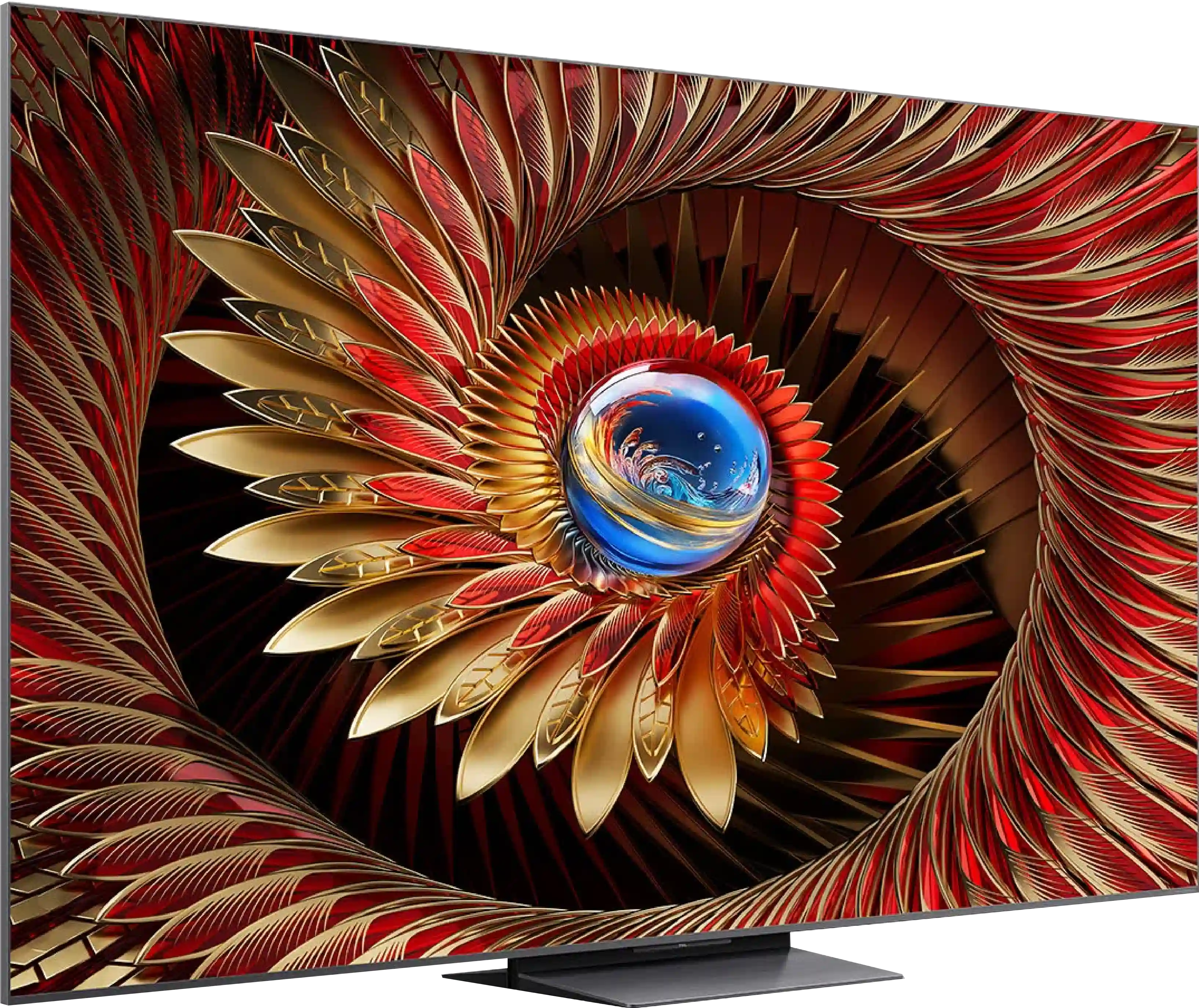
Panel type: LCD VA (wide viewing angle)
Resolution: 3840x2160
System: Google TV
Model year: 2024
Complete the survey to find out the result

Panel type: LCD VA
Resolution: 3840x2160
System: Google TV
Model year: 2025
Complete the survey to find out the result

Overall rating
8.8
7.7
Movies and series in UHD quality
8.4
7.4
Classic TV, YouTube
8.4
7.0
Sports broadcasts (TV and apps)
8.5
6.8
Gaming on console
9.2
8.9
TV as a computer monitor
7.6
8.6
Watching in bright light
9.5
6.9
Utility functions
8.8
7.7
Apps
9.6
9.6
Sound quality
9.4
7.9
Complete the survey to find out what fits your preferences
Advantages
Amazing HDR material brightness results
Very good colour reproduction after calibration
Advanced motion smoothing system
Noticeable positive effect of the image processor
Faithfulness to the source material
Versatile GoogleTV operating system
Good (for a VA panel) viewing angles
Great contrast and black levels
Very high HDR brightness
Support for all popular HDR formats
Fast 4K@144 Hz panel
Many features for gamers (VRR, ALLM, Game Bar, Low input lag)
GoogleTV operating system with multiple apps
Improved viewing angles thanks to WHVA panel
Very good sound: Collaboration with Bang & Olufsen
Disadvantages
Only 2 HDMI 2.1 ports - including one ARC
No picture-in-picture (PiP) feature
No smaller variants such as 55"
Very weak dimming algorithms
Colour reproduction out of the box needs improvement
Only 2 HDMI 2.1 ports and one USB.
No recording function from built-in tuners or PiP
Our verdict
The C8K is proof that premium Mini LED technology does not have to cost as much as a premium product. With a high number of dimming zones and a new WHVA panel, the television offers excellent contrast, deep blacks, and very high brightness – everything we expect from a good viewing experience in the living room. The improved viewing angles are also surprising, finally allowing us to enjoy watching even when sitting outside the centre of the frame. The C8K also excels in the gaming world – 144 Hz, support for 288 Hz in Full HD, a complete set of gaming features, very low input lag, and sensible compatibility with PCs make it hard to tear ourselves away from it with a controller or keyboard in hand. Onboard, we also have Google TV – currently the most advanced and versatile Smart TV platform. There is access to all key applications, excellent voice control, and an intuitive interface. It may lack some classic TV features like USB recording from built-in tuners or picture-in-picture (PiP), but most users won't even notice that. On top of all this, there is very decent sound – a new collaboration with Bang & Olufsen.
Of course, it is not a screen without flaws. HDR, although impressive, still carries some 'mini LED' traits – bright scenes can be overly bright or dimmed, and the system lacks a few classic features known from other brands. But when we look at its price compared to the competition, it’s hard not to ask ourselves – why pay more?
TV appearance




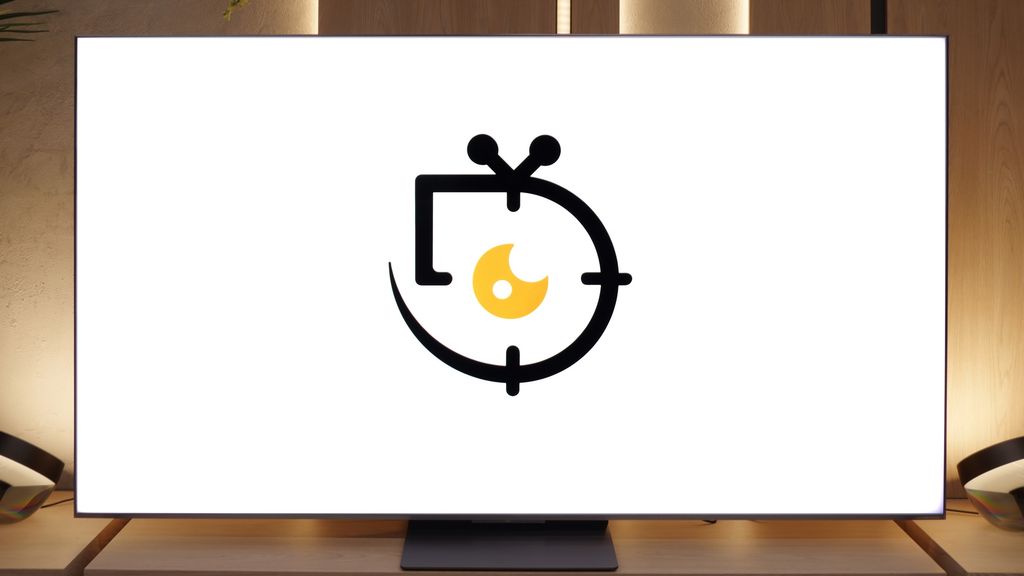
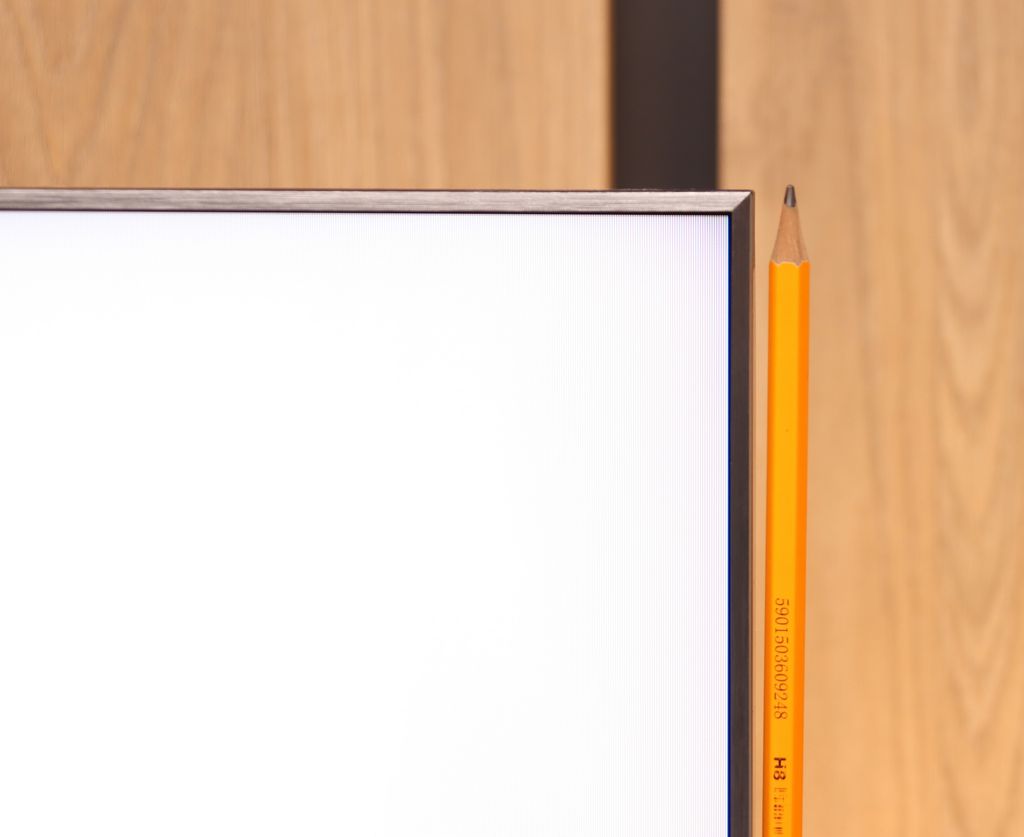
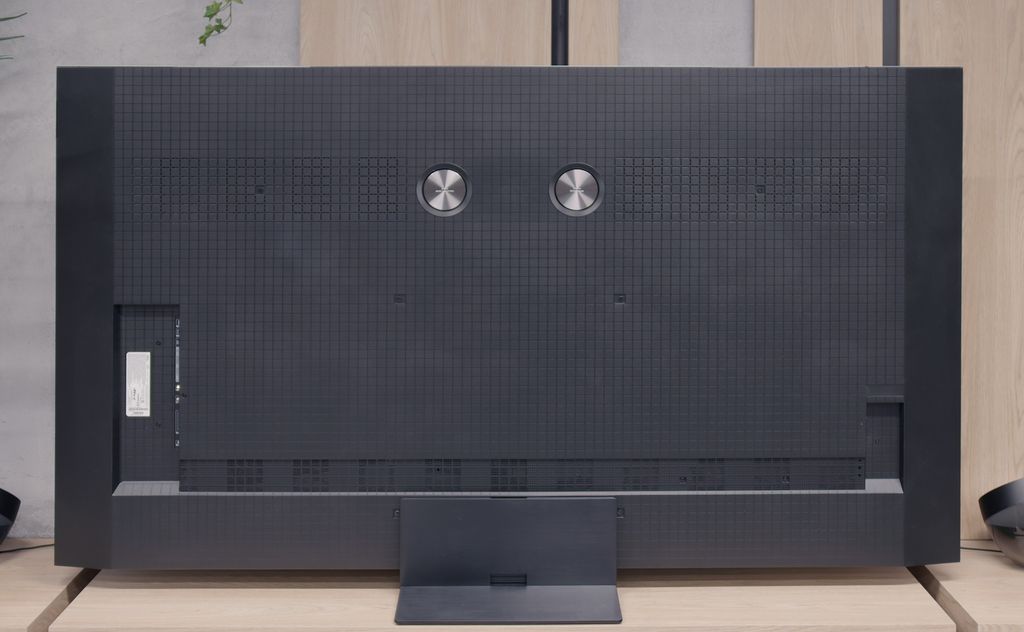
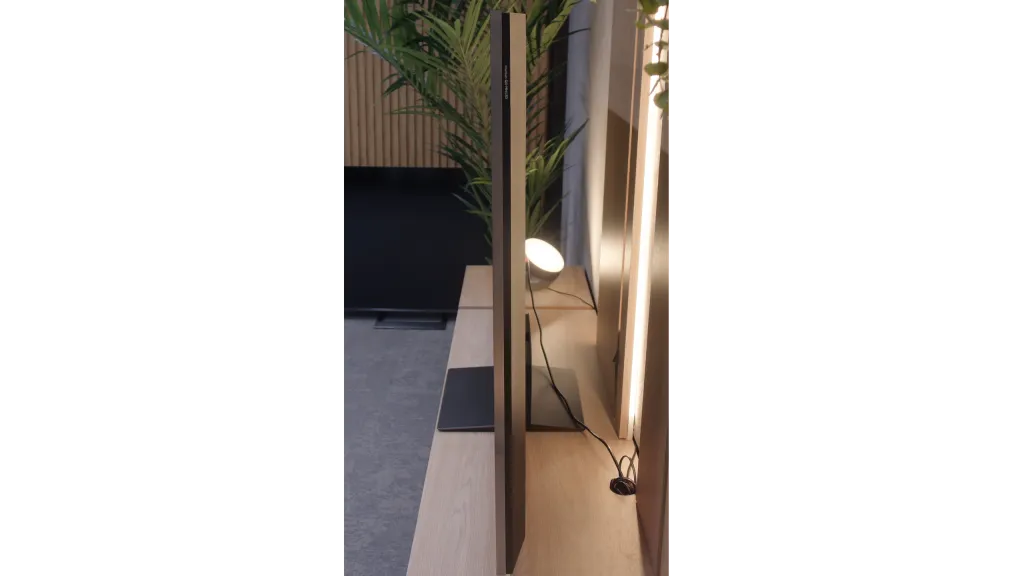
Contrast and black detail
8.6/10
8.2/10
Local dimming function: Yes, number of zones: 1920 (60 x 32)
Local dimming function: Yes, number of zones: 1680 (30 x 56)
Contrast:

Result
184,000:1

Result
98,500:1

Result
120,000:1

Result
9,050:1

Result
5,800:1

Result
714,300:1

Result
68,100:1

Result
25,050:1

Result
17,800:1

Result
12,500:1
Halo effect and black detail visibility:

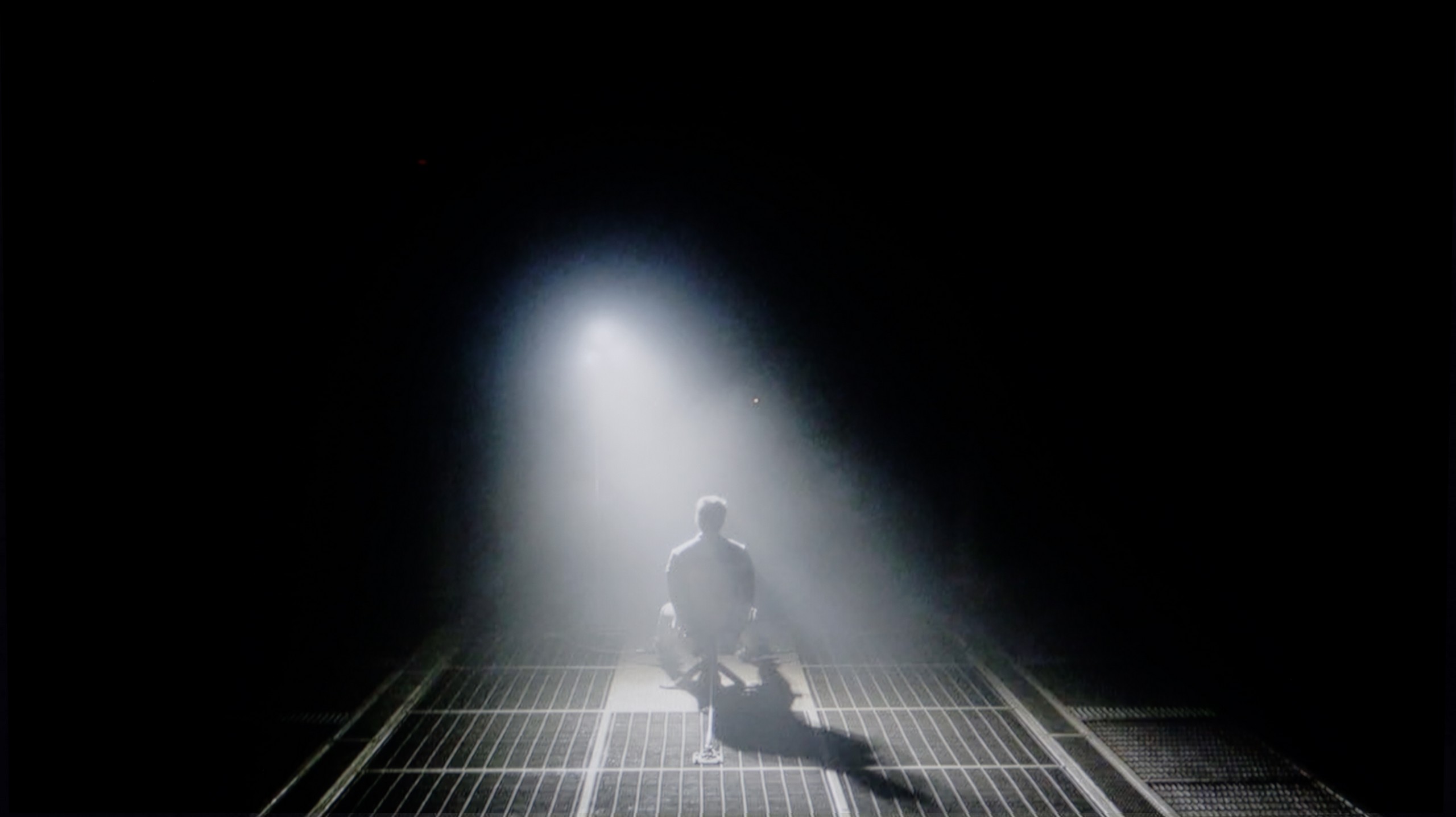
Similarly, the Sony Bravia 9 utilises a high-contrast VA panel, supported by backlighting composed of Mini LED diodes. The total number of zones for the 75" size, which we tested, was 1920. The combination of such a number with advanced, and confidently one could say — the best zone dimming algorithms yields excellent results in contrast and black levels. Practically each of the scenes can showcase an incredibly deep and immersive image. Of course, the last two will not provide us with blacks akin to those of OLED televisions, although it cannot be said that the results are poor, as a significant portion of competing televisions will not deliver such a faithfully reproduced directorial vision. Looking below at two test scenes from Sony Bravia 9 from the film Oblivion and Sicario 2, we can observe the very mature behaviour of the backlighting algorithms, which do not allow for preserving black at the expense of the original image. Of course, the blooming effect still occurs here due to the operation of the television's zones (it can be observed on the small lights on the helicopter), but it is definitely one of the best LCD televisions we have tested in terms of black levels and contrast.
TCL C8K is a representative of Mini LED televisions and – importantly – uses a VA panel. This means high native contrast right from the start, but the true strength of this model reveals itself only when we combine it with an impressive number of dimming zones. In the 75-inch version we tested, we counted nearly 1700 independent zones – and you can feel it. In many scenes, the effect of black levels and contrast is nothing short of phenomenal. In less demanding scenes – where the dimming algorithms do not have to 'struggle' much – the screen can resemble OLEDs. The contrast can be almost infinite, and the separation of bright and dark elements leaves an excellent impression.
However – as is often the case with Mini LEDs – it is not an organic screen and some compromises must be accepted. Brightness is a significant advantage, but also a factor that can reveal the weaknesses of this solution – especially in dark scenes. In particularly challenging scenes to display – such as those famous ones with a starry sky or sequences from the iconic Pioneer Kuro – the so-called halo becomes noticeable, which is a glow around small bright details. Sometimes the entire screen also slightly brightens when the system tries to balance contrast with extreme luminance. However, this is a feature of the technology, not a flaw of the specific model. And although these types of compromises can slightly diminish the overall impression in certain scenes, TCL C8K is among the very best when it comes to contrast among Mini LED televisions.
HDR effect quality
8.6/10
6.9/10
Luminance measurements in HDR:

Result
2199 nit

Result
1700 nit

Result
1717 nit

Result
1751 nit

Result
1741 nit

Result
1241 nit

Result
510 nit

Result
1180 nit

Result
375 nit

Result
1421 nit
Scene from the movie “Pan” (about 2800 nits)


Scene from the movie “Billy Lynn” (about 1100 nits)


Static HDR10


Dynamic: Dolby Vision
Dynamic: Dolby Vision


HDR luminance chart:
TCL C8K
HDR luminance
Sony Bravia 9 (XR90)
HDR luminance
The results of brightness measurements on the Sony Bravia 9 are phenomenal. Each scene reaches well over 1500 nits, and when watching films, the television can sometimes shine even brighter. It goes without saying that such brightness allows for unprecedented experiences and engagement with video material at the highest possible quality. Thanks to the high coverage of the DCI-P3 colour palette, the image is full of colours and, combined with such high luminance, it practically breathes. With high peak brightness, viewers can enjoy the full range of colours even in the most challenging scenes, such as those based on dynamic lighting changes. The Bravia 9 offers support for Dolby Vision and HDR10 formats, which further enhances the viewing experience.
The TCL C8K is a truly bright television. In synthetic conditions – that is, during brightness test patterns – it was able to achieve even 3500 nits of peak brightness in movie mode. This is an impressive result that brings the C8K close to the market leaders, at least in terms of panel brightness. More importantly – these are not just numbers on paper. In films with a lot of bright scenes, such as Life of Pi or The Meg, the brightness clearly exceeds 1000 nits, providing a real sense of HDR effect. The picture in such moments looks very dynamic, colours are vibrant thanks to excellent colour gamut coverage, and lights are spot-on and intense. Just as it should be.
However, this does not mean that everything is perfect. Similar to the contrast tests, compromises also arise here in more demanding scenes. In sequences with very fine light elements – such as stars in the night sky or reflections in dark rooms – the local dimming algorithm can… get confused. Instead of bringing those details up, the television sometimes decides to significantly dim them – to a level of around 300 nits – to maintain blacks. On one hand, this is quite a reasonable approach (better deep blacks than a grey/blue screen), but on the other hand – there may be moments when certain elements of the picture become hardly visible or even disappear into darkness.
TEST UPDATE (20/08/2025) : The brightness control algorithm in this model is quite problematic – an attempt to calibrate the picture so that it does not drastically overexpose the brightest scenes results in unnatural shifts: an improvement in one area of the picture leads to a deterioration in another. The television may achieve slightly higher brightness measurements, but in practice, this comes with a highly oversaturated image that looks very unnatural!
For the sake of order, we provide the brightness values without this adjustment:
1463 nits
640 nits
1368 nits
468 nits
1025 nits
Factory color reproduction
8.1/10
4.8/10


Factory Mode
After calibration
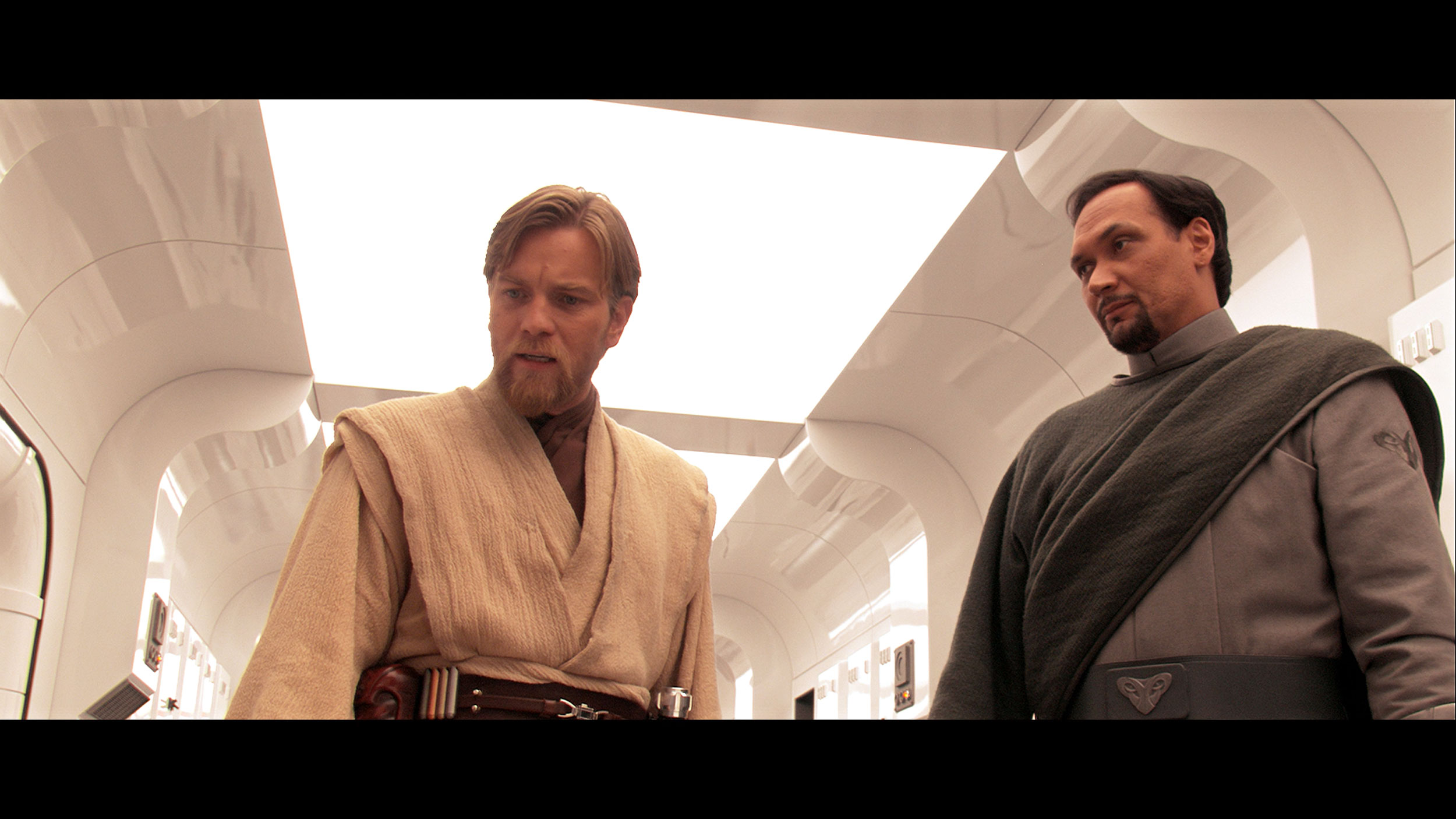
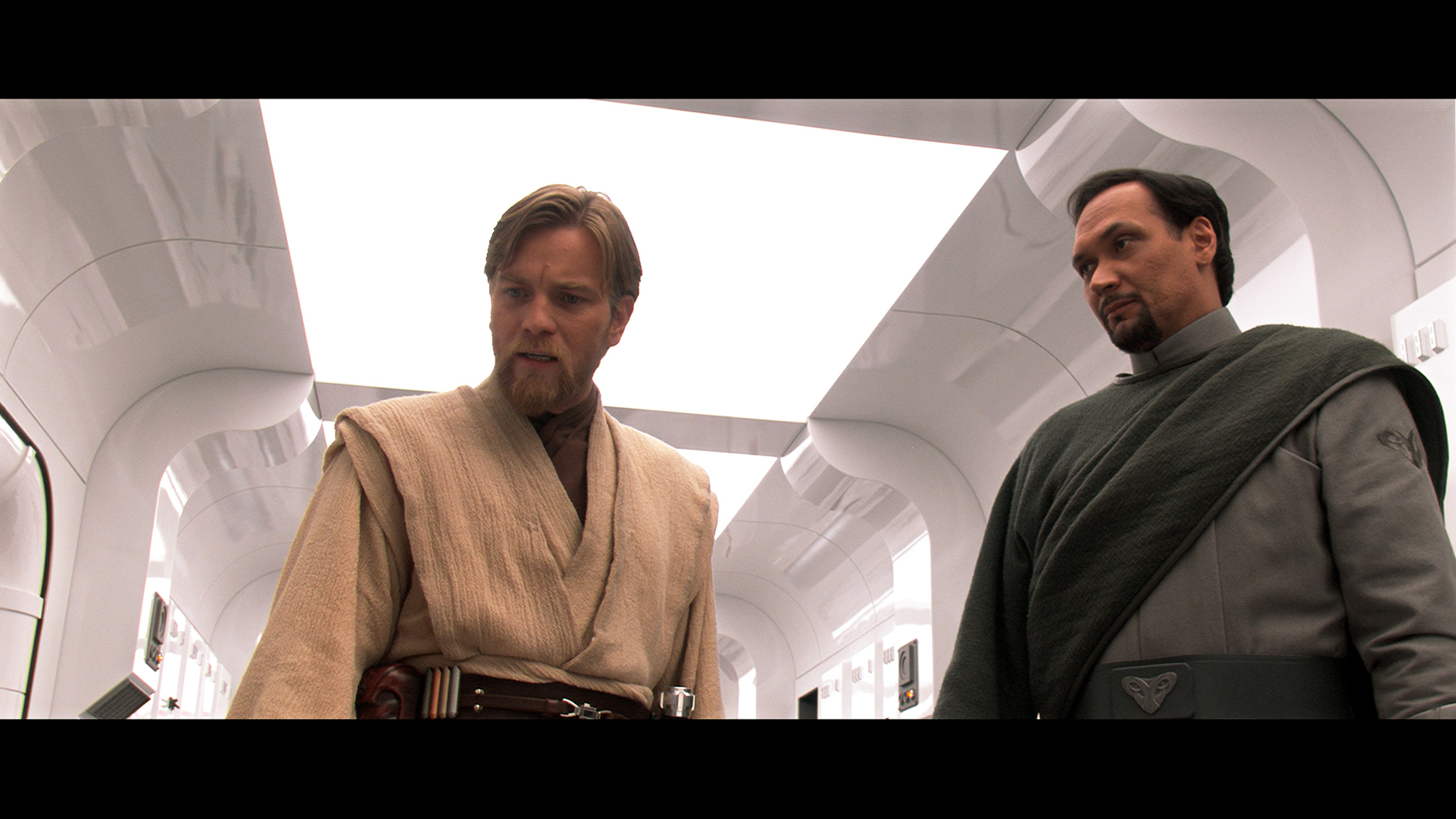
Factory Mode
After calibration
The best factory mode in Sony televisions has consistently remained "IMAX Enhanced" for years. It was this mode that we used throughout the entire testing procedure. Although it is indeed the most similar to the standard compared to other predefined options, it has a number of aspects that can be improved to make viewing even more enjoyable. When we look at the gamma in SDR materials, we notice quite a significant boost that will be associated with image contrast. It is worth noting that the very beginning of the graph has an even greater rise compared to the reference, leading to a blending of details in the blacks, creating a uniform blot. The EOTF curve in HDR content looked quite correct and exhibited only minor deviations from the reference. However, a common feature for both was: a green colour dominance in white balance, issues with greys and overall colour misalignment. The aspect that stood out the most was related to the uneven distribution of hues in white balance. Due to the excess of the aforementioned colour, the image was covered with an unpleasant greenish tint.
In the C8K, a new picture mode has appeared: Filmmaker Mode. This is something we have known for years from televisions of other brands – a mode designed to deliver the director's vision as faithfully as possible, without unnecessary image enhancements. Unfortunately, with TCL, this still seems to be at a stage 'in need of improvement'. At first glance, the screen appears too warm – the image leans towards reds, which may not appeal to everyone. The white balance was significantly skewed – the screen looked distinctly warm, and the red colour dominated almost every scene. There was a lack of blue, which resulted in an unpleasant yellowing and distortion of the image. But that’s not all. Regardless of whether we were watching regular television, YouTube, or films in HDR – the television had a clear tendency to excessively brighten the image. In the gamma and EOTF graph tests, the lines, instead of sticking to the pattern, strayed, which in practice translates to an overly bright and less contrasty image. Additionally, in the colour reproduction tests, there were noticeable deviations – on the colour wheel, certain points were even 'off the mark'. It must be said plainly: Filmmaker Mode in the C8K in its current form is not very filmic.
Color reproduction after calibration
9.3/10
7/10

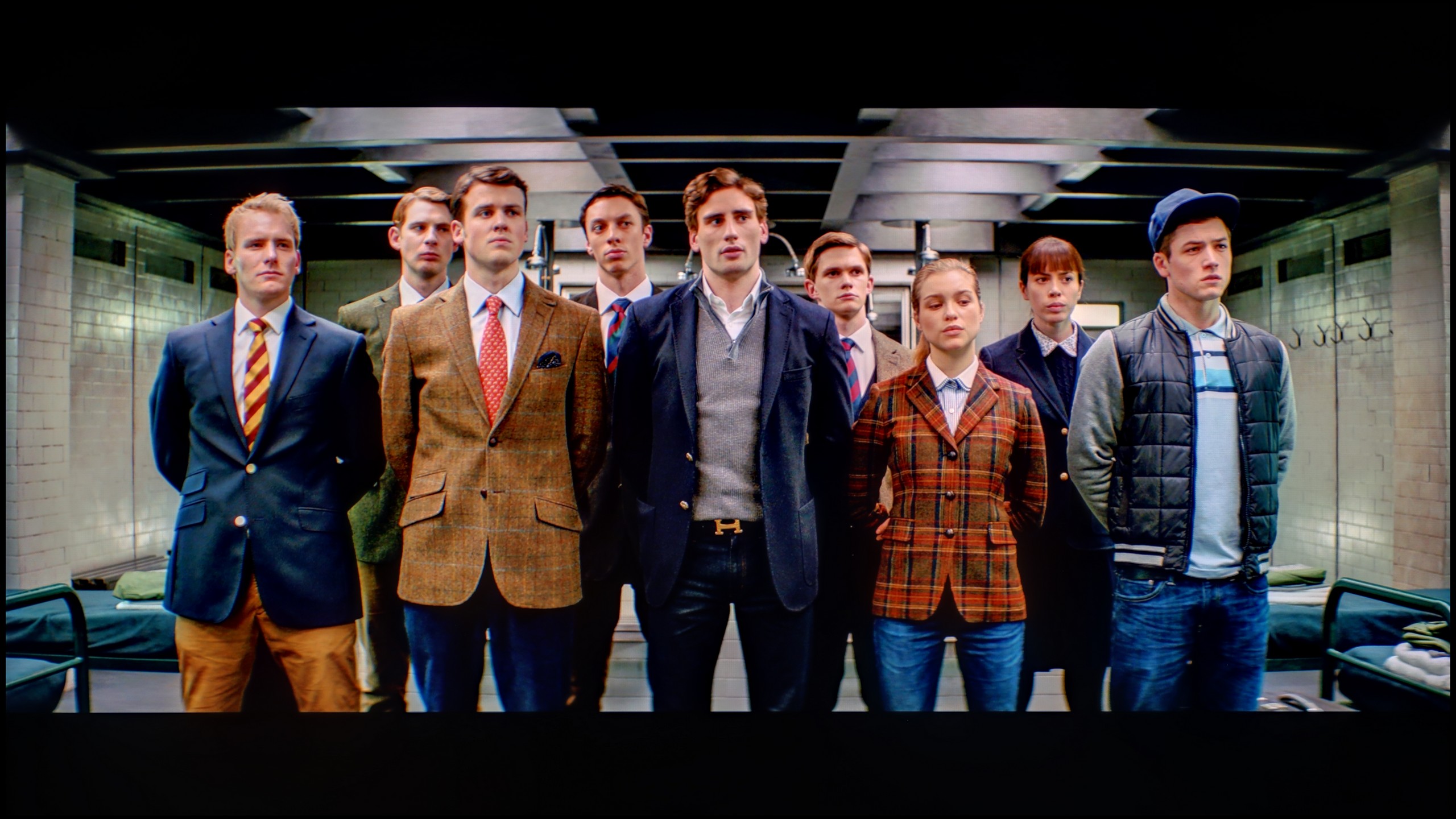

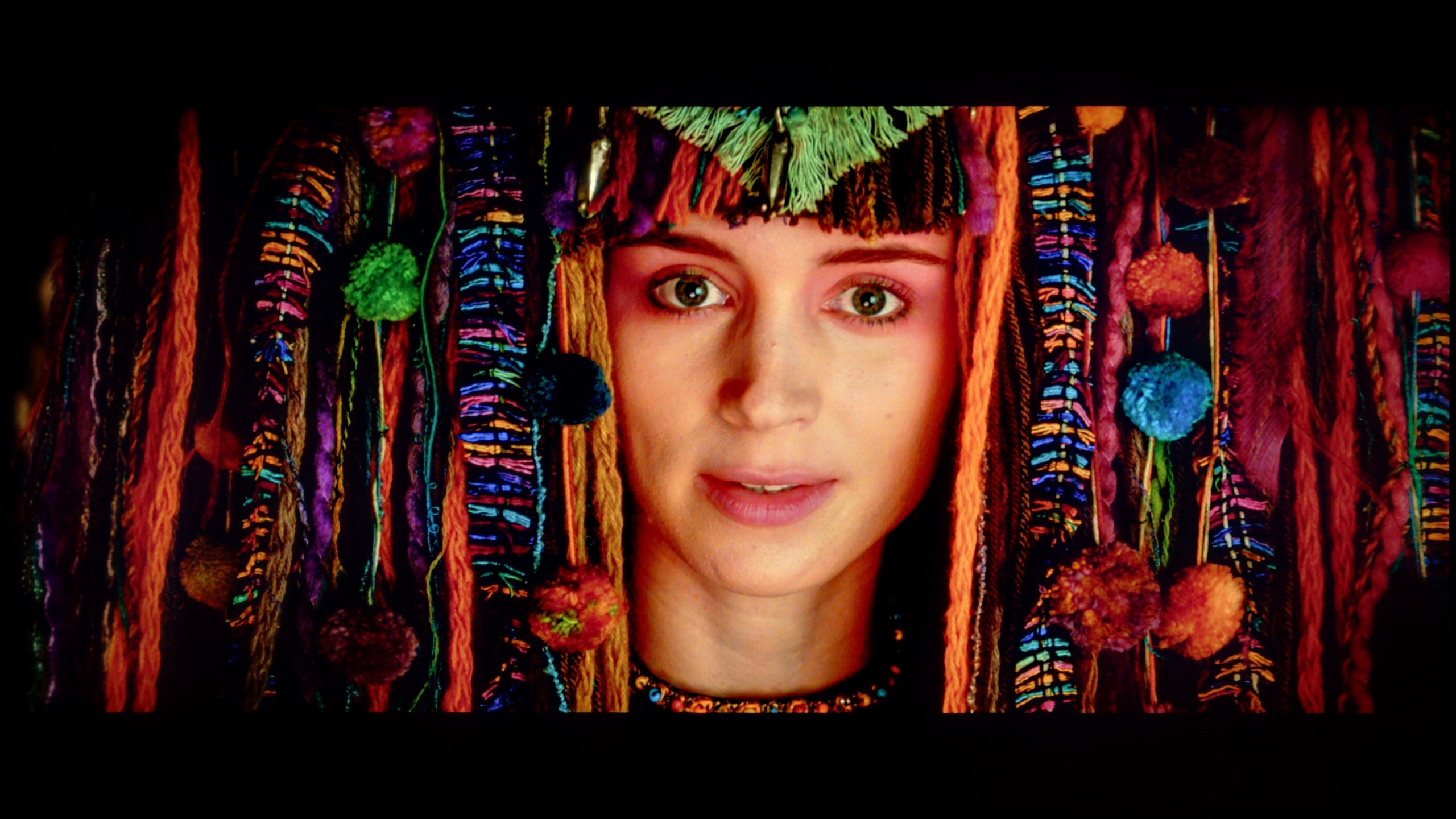
The colour reproduction after the calibration process should be regarded as excellent. Regardless of the signal, whether SDR or HDR, we can expect an image that is remarkably close to what the film director saw. Virtually every flaw in the image has been modelled and maximally corrected. This was made possible thanks to the advanced tools used for the calibration process, which Sony has been providing in its televisions for years, including 2- and 20-point grey scale adjustment as well as a very comprehensive CMS.
After professional calibration, the TCL C8K has made a huge step forward. In SDR content, we managed to almost perfectly set the white balance – the screen has finally stopped being too warm and has acquired a neutral character. The gamma curve, responsible for the way brightness is reproduced, also looks very good now – the image is more consistent and realistic. We also improved the white balance in HDR content – within the limits that the television itself allows. Unfortunately, the C8K still interprets brightness management somewhat "in its own way." When we look at the EOTF chart in films, it is clear that the television brightens entire scenes more than it should. Before calibration, this effect was really troublesome – now the situation looks much better, although it still falls a bit short of perfection. This, however, is a limitation of the device itself, which – despite our efforts – does not allow us to fully tame its nature.
Smoothness of tonal transitions
7.1/10
8.7/10





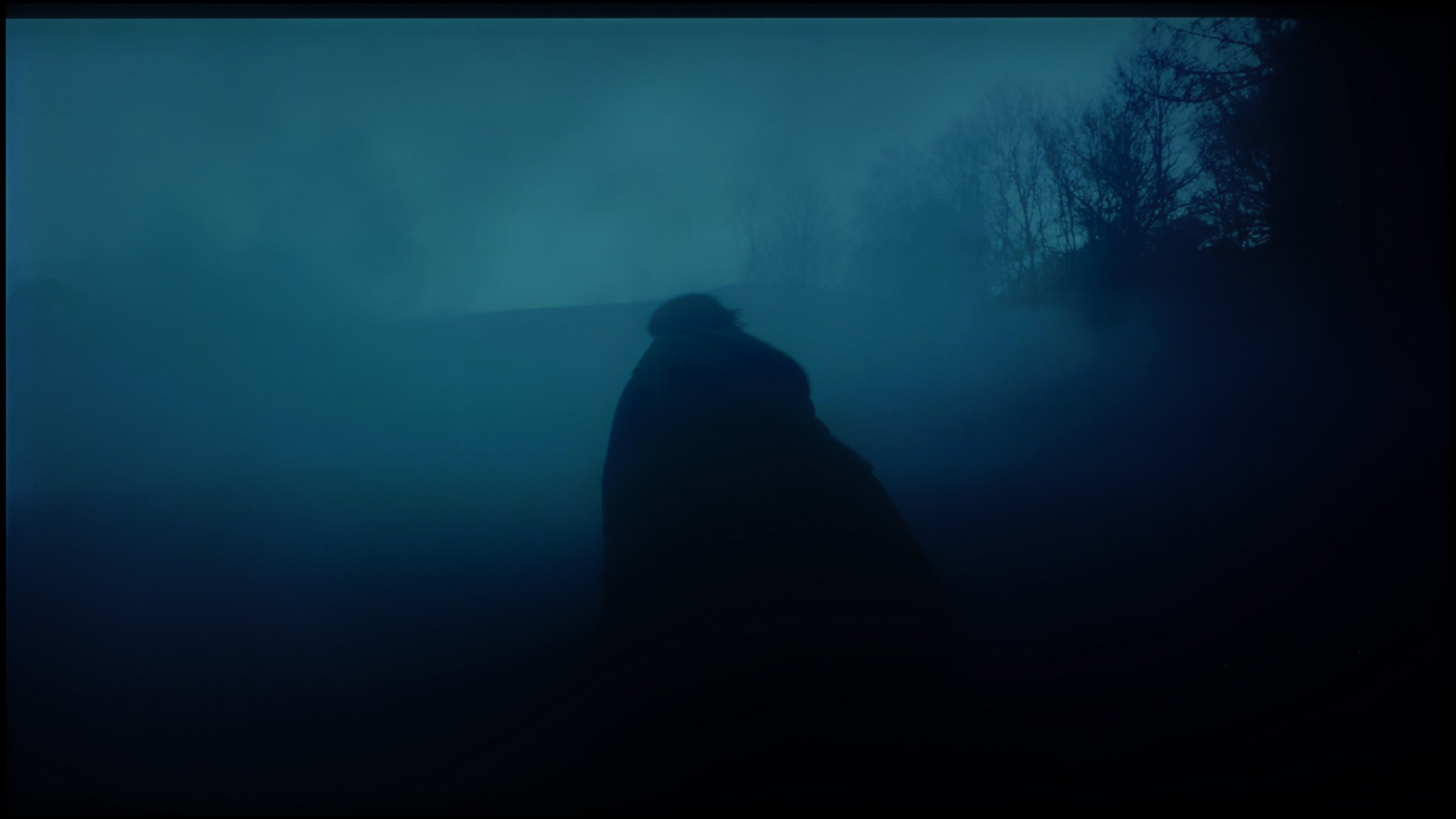

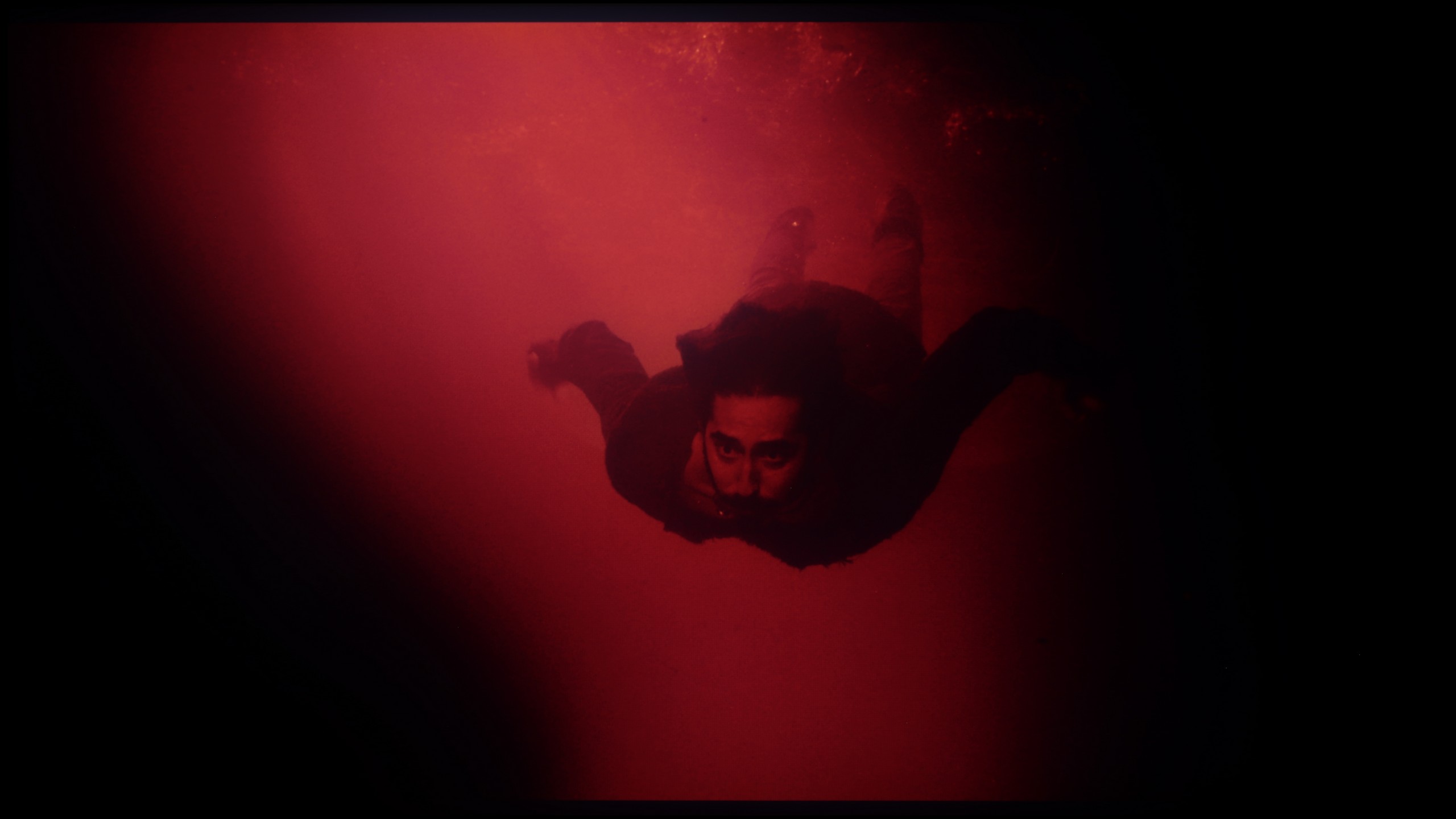




The default quality of gentle gradation, i.e. with the enhancement function turned off, is quite mediocre, considering the price range and class of the device. The problem is not noticeable on very bright backgrounds but is quite pronounced on dark ones. This is perfectly illustrated by the last two test scenes, where tonal transitions are noticeable and may discomfort purists of image quality.
In this respect, the TCL C8K performs really well. Transitions between colours look natural and coherent – there are no strange bands or significant banding that could disrupt the viewing experience. Especially in bright scenes, everything appears very smooth. In the darkest parts of the image, particularly in shades of grey, one can sometimes notice slight unevenness, but they are subtle enough not to be distracting to anyone.
Image scaling and smoothness of tonal transitions
8.5/10
5.5/10
Smooth transition function

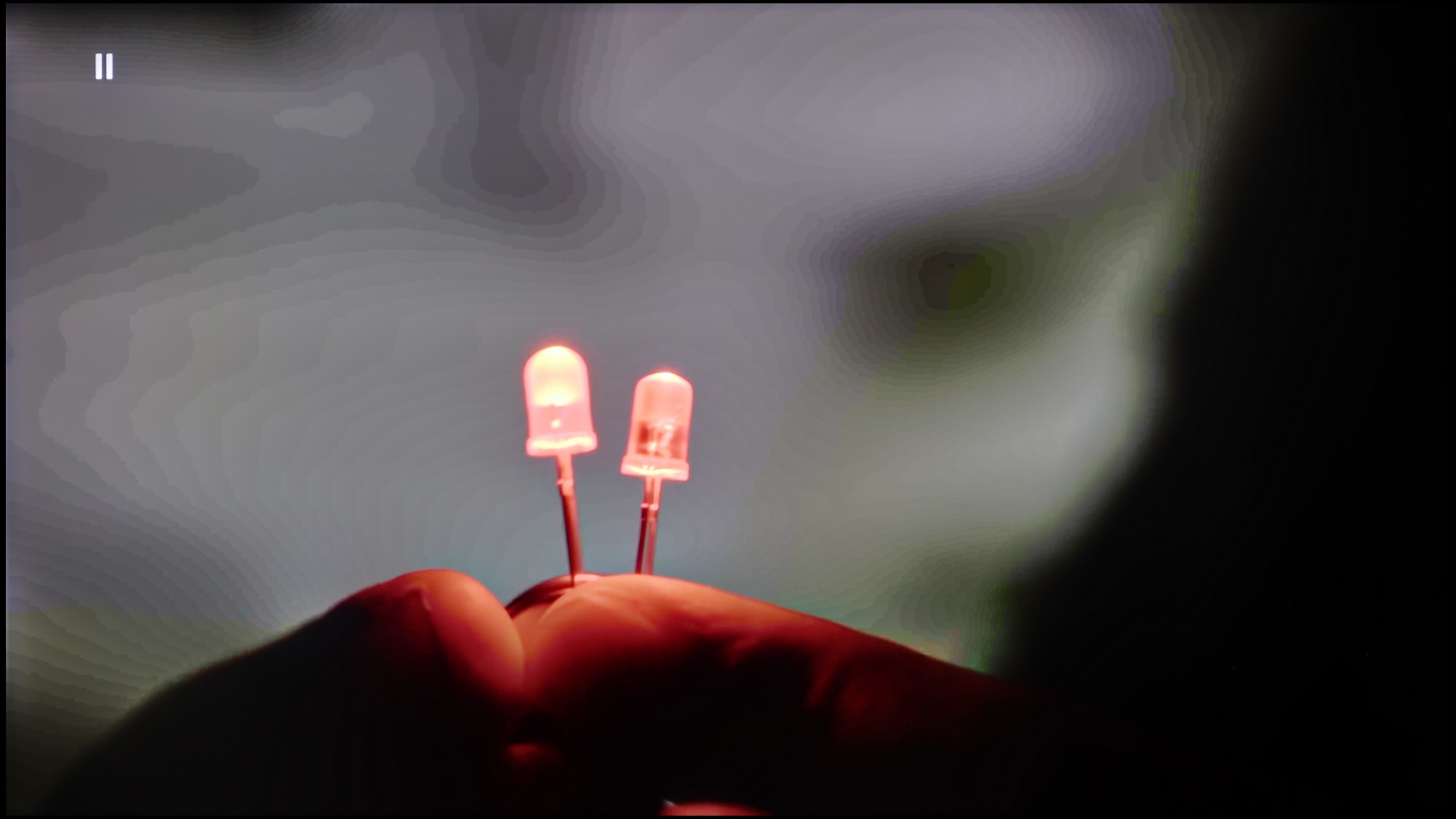
Image without overscan on the SD signal


Let’s take another look at the quality of tonal transitions, but this time we will analyse the quality of image scaling, which will be significantly important when watching lower quality materials. For starters, we will take a look at the function responsible for the quality of tonal transitions. And while by default they are quite average, after activating the option, even at the lowest level, we can confidently say that these are among the best we have seen. You can confidently enable this feature, as it does not cause any negative phenomenon, such as film grain blurring.
Sony has been boasting for several years now that its "XR" processor is unmatched when it comes to image scaling. And we find it quite easy to believe, because in fact the image is extremely sharp, yet very natural.
How does the TCL C8K perform with lower quality content? One could say: reasonably well, though without much enthusiasm. The television offers a tonal transition enhancement feature, which aims to smooth out unwanted gradients. In practice, there is a slight improvement, but it is not at a level that will eliminate all imperfections. The feature subtly softens harsh transitions, but does not perform miracles. Film grain is not completely suppressed, and gentle banding on grey backgrounds can still be noticeable. But perhaps that is for the best? – at least the image does not lose its texture or depth, as can happen with televisions that overdo digital processing. When it comes to upscaling, or enhancing the quality of images from lower resolutions, the C8K performs quite well. The picture is sharp, and details – although sometimes slightly softened – remain readable. However, it is not at the level of the best image processors from the competition. On the plus side, it is worth noting the lack of overscan issues, which is the artificial trimming of the image that can still surprise in some models from other brands.
Blur and motion smoothness
8.5/10
7.8/10

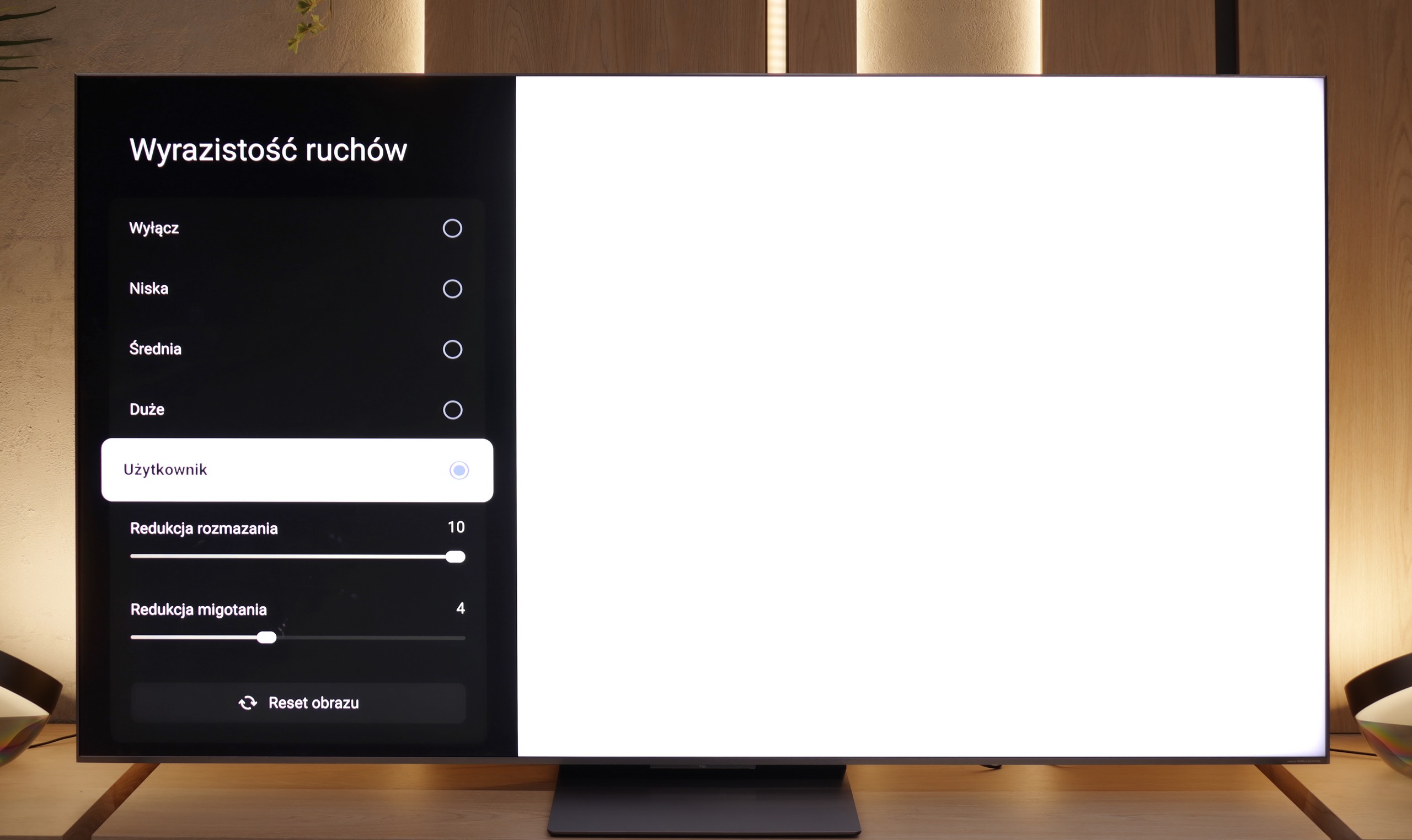
Blur (native resolution, maximum refresh rate):



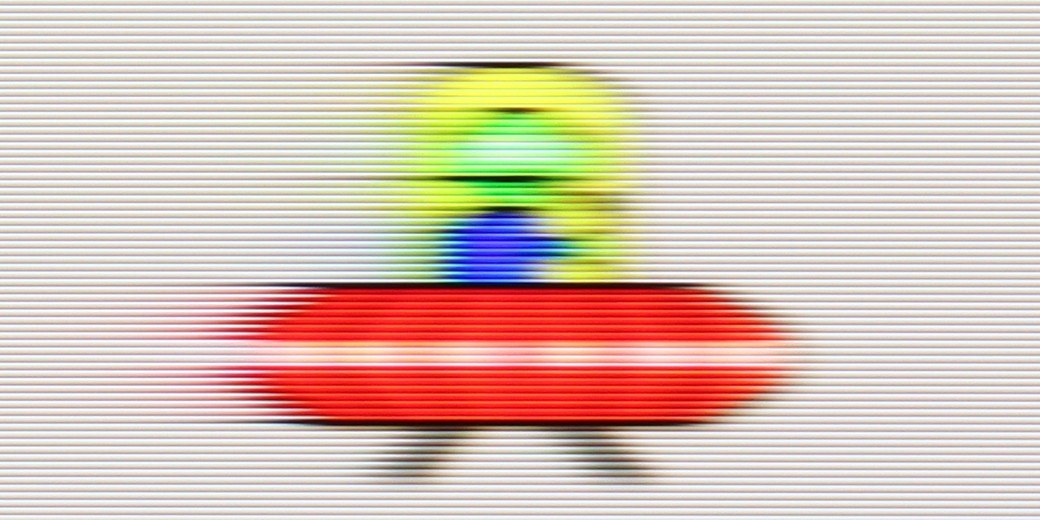
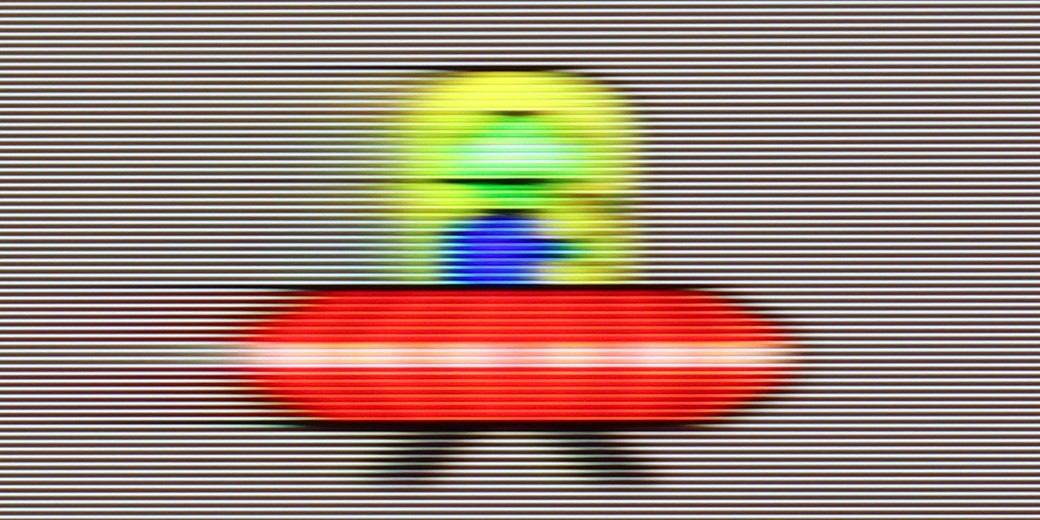
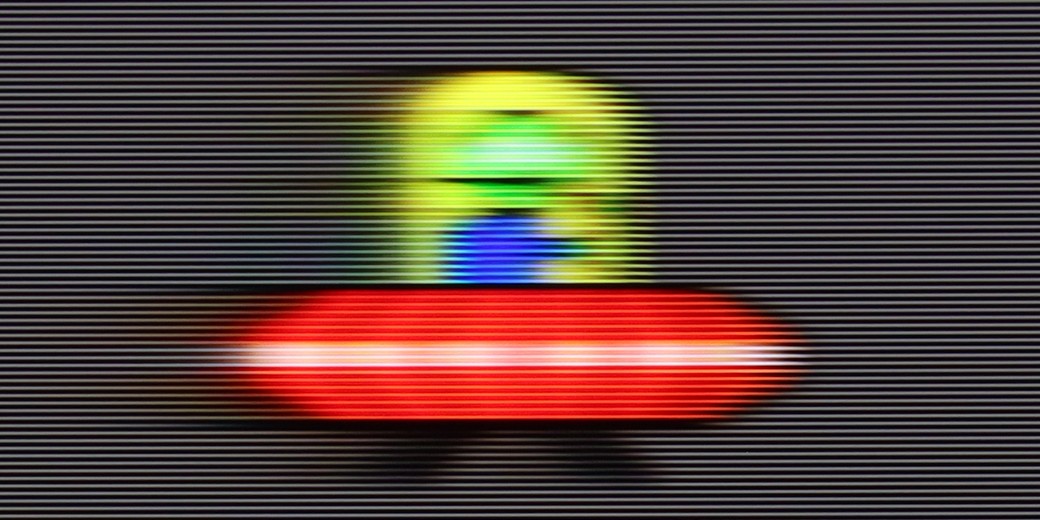
Blur (BFI function enabled):






Smużenie ():
Smużenie (288HZ 1080p):
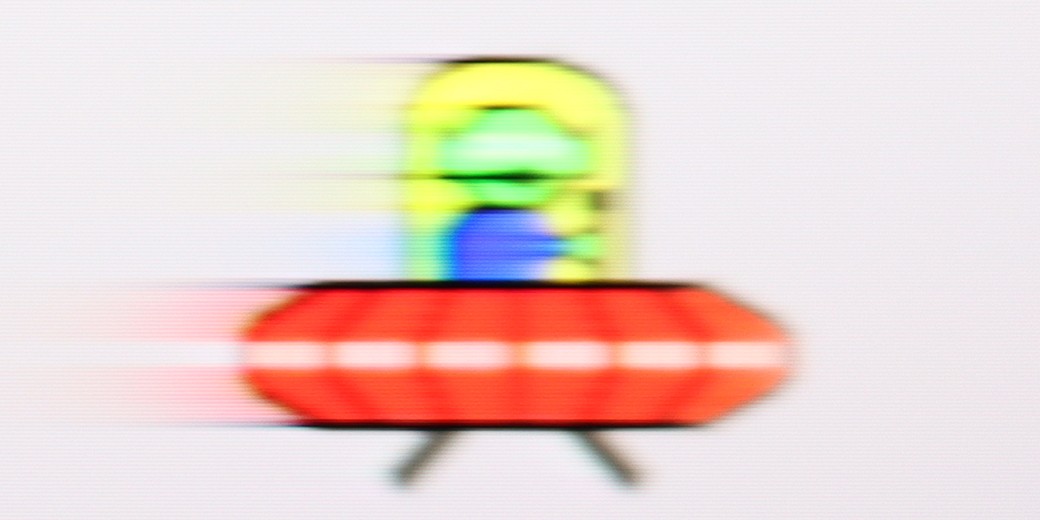
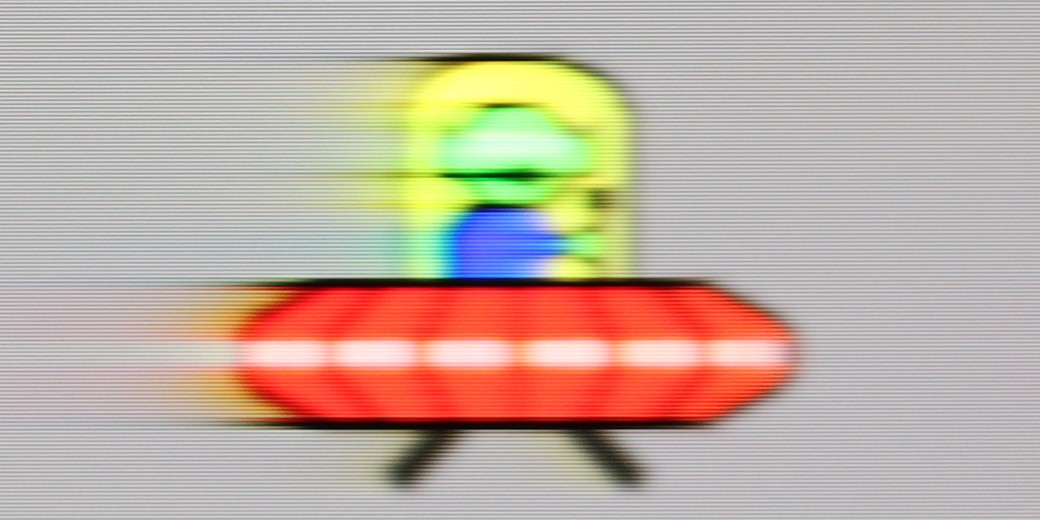
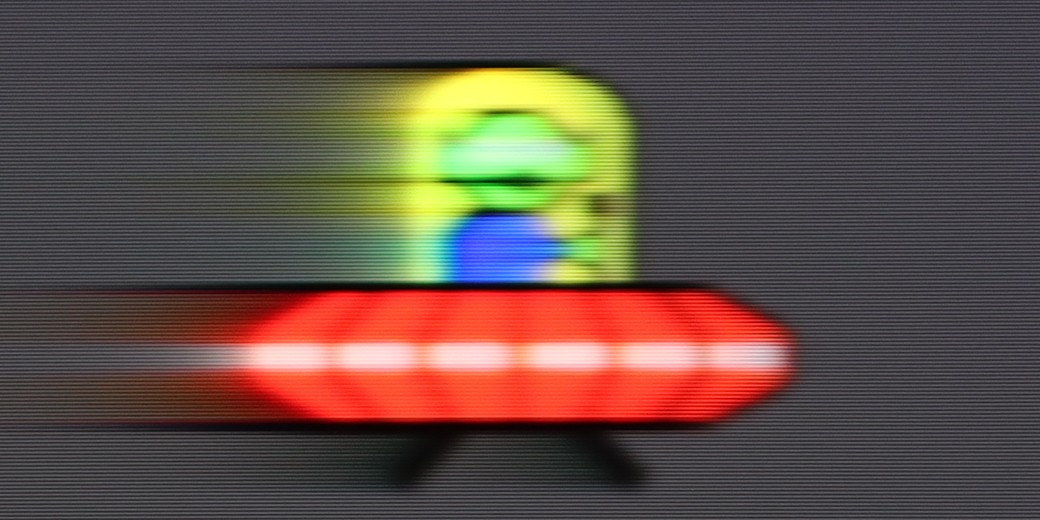
The maximum refresh rate of the Sony Bravia 9 is 120 Hz. This is the essential minimum for watching primarily sports or materials with significant motion dynamics while maintaining a sharp and smooth image. For demanding users, the manufacturer has implemented a very comprehensive smoothing system, which has been divided into three segments: Smoothness (Film), Smoothness (Camera), and Clarity. The first two correspond to the degree of blurring and the degree of smoothing, respectively. The third option will be described in more detail below. Moreover, we can adjust all settings to various degrees, each of which will produce an effect, ensuring that we can find our own golden mean. In the picture, we present a setting with slight smoothing, without the soap opera effect.
If you are planning a weekend with the Champions League or a marathon of F1 races – the TCL C8K won't let you down. The television is equipped with a 144 Hz panel, which means it should handle fast motion well by definition. And indeed – it performs very well. The fluidity of motion is at a very good level here, and the "Motion Clarity" feature with two sliders (motion blur reduction and flicker reduction) makes it easy to adjust the effect to your own preferences. Want to smooth it out a bit – you can. Prefer a cinematic look – no problem.
Console compatibility and gaming features
9.4/10
9.8/10
- ALLM
- VRR
- VRR range48 - 120Hz48 - 288Hz
- Dolby Vision Game Mode
- Correct implementation of HGIG
- 1080p@120Hz
- 1440p@120Hz
- 4K@120Hz
- Game bar

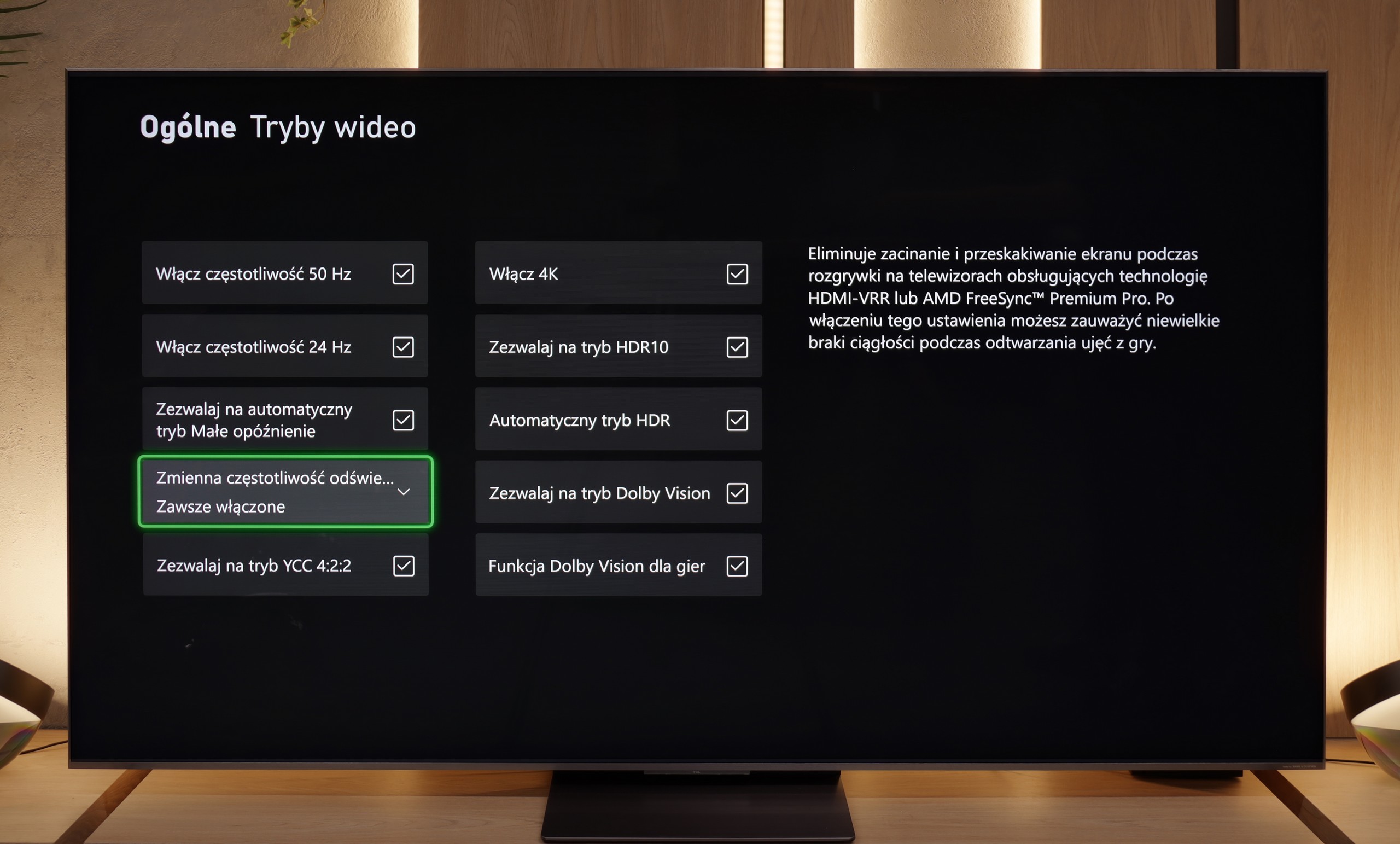

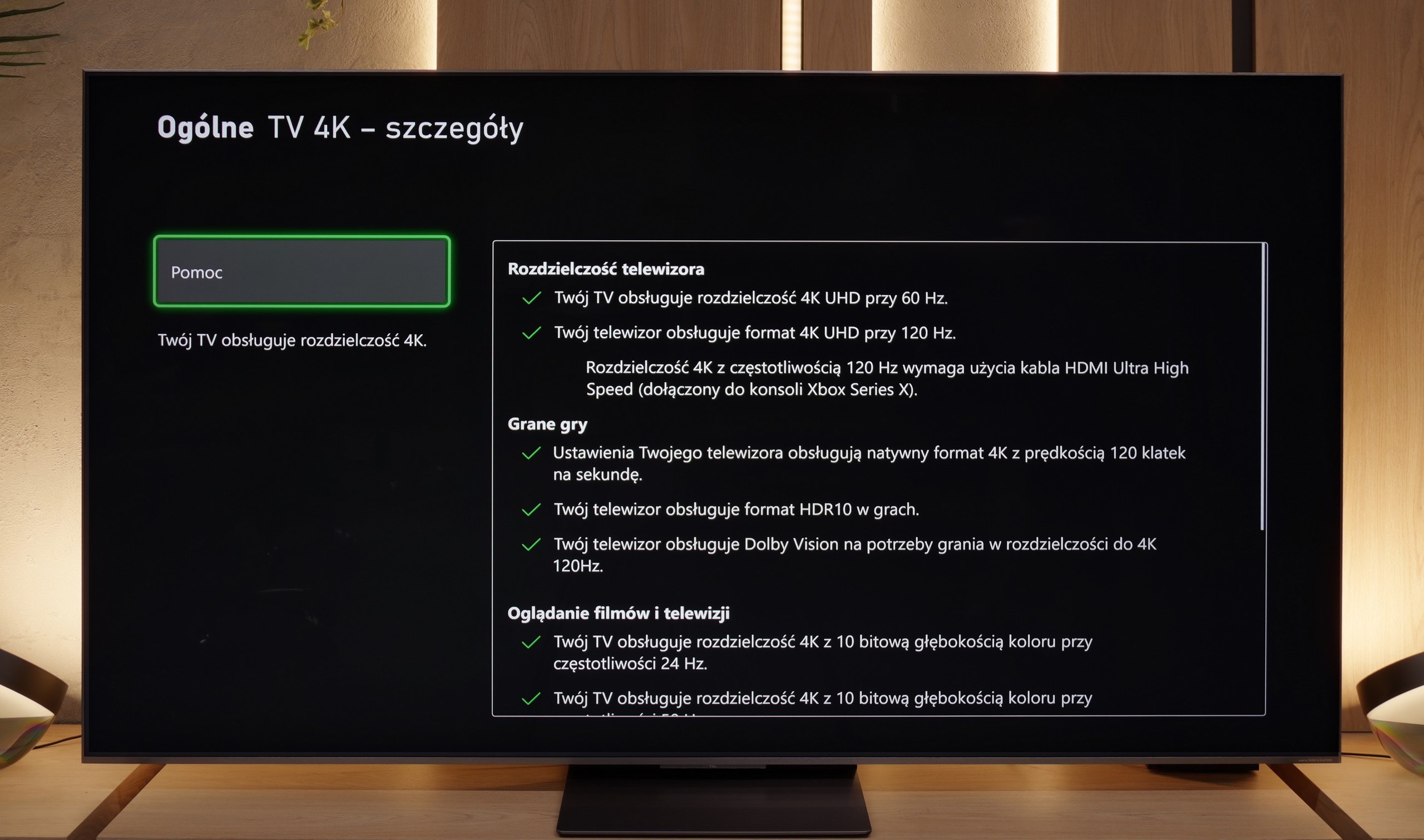

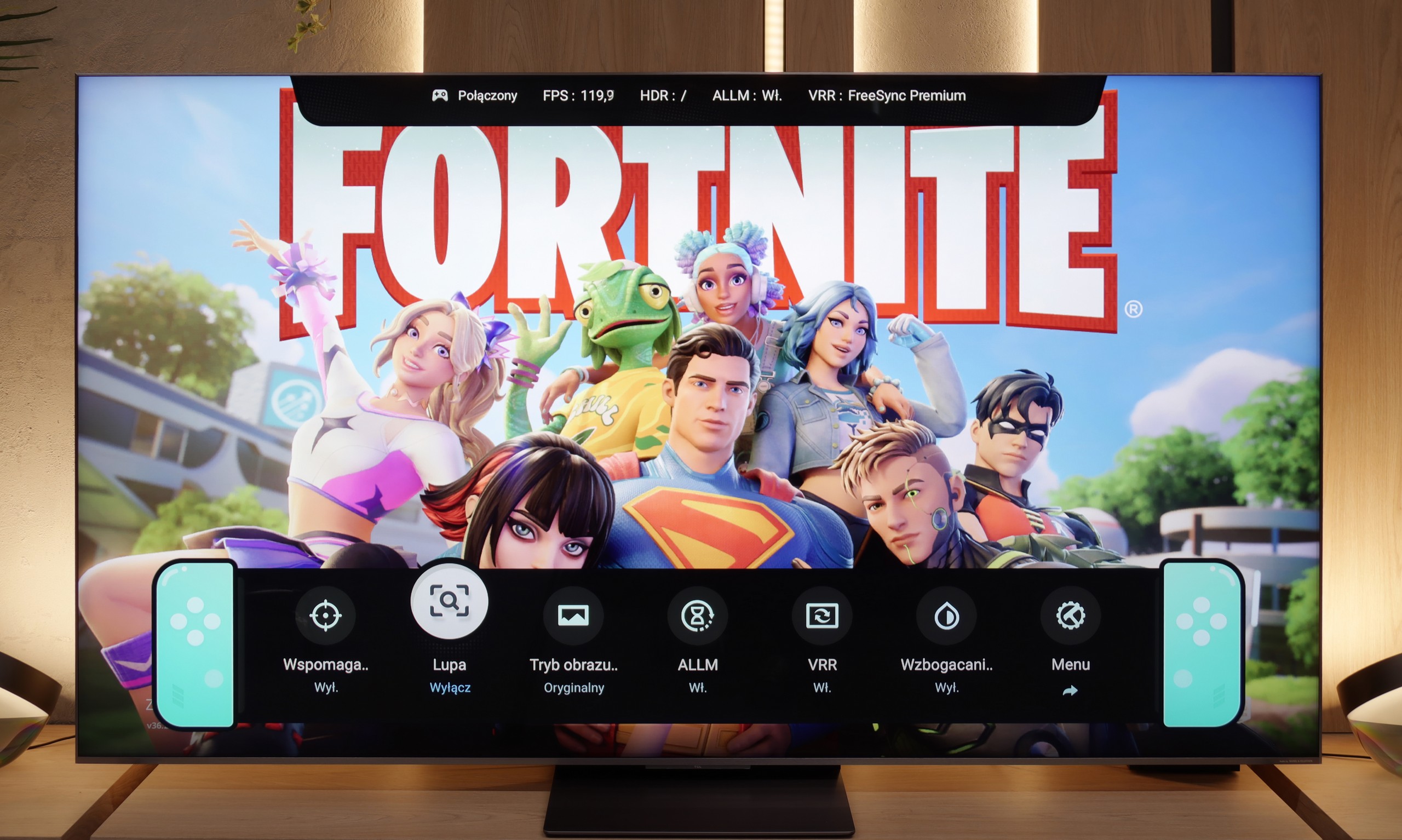

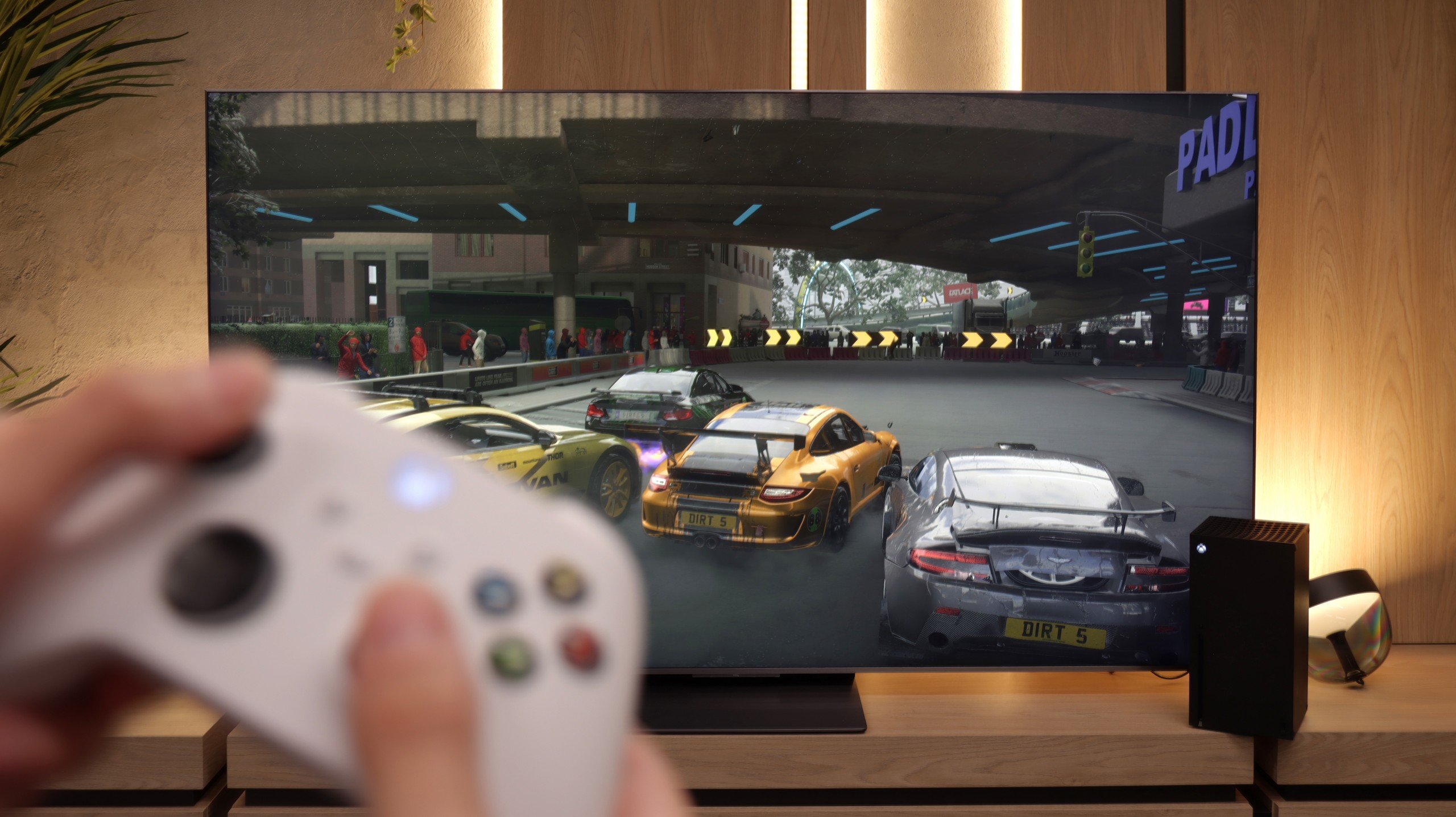
The Sony Bravia 9 television is equipped with four HDMI ports. However, somewhat inexplicably for a device of this class, only two of them operate in the 2.1 standard. That said, it should not be overlooked that almost all functions perform excellently and do not cause any negative feelings when being activated. Games running either in HDR10 or Dolby Vision have very low input lag, allowing for a very comfortable session with the title. A consolation remains in the form of a good implementation of the HGIG mode, which, after proper adjustment, does not differ significantly from Dolby Vision.
A year ago, Sony added to its televisions what has long been a standard for some manufacturers. This refers, of course, to the GameBar, enabling quick adjustment of settings without the need to exit the game. The implementation of this feature was successful and works very efficiently. We have been provided with conveniences such as: a crosshair grid, black level correction, and the option to reduce the screen to the proportions of gaming monitors.
The Sony Bravia 9 will undoubtedly find its fan base, most likely among PlayStation enthusiasts. Here, we must admit that it will be the most sensible choice, as in practice both the console and the television possess exactly the same capabilities. Looking at the bigger picture, while overlooking the issues with Dolby Vision in games, one cannot detract from the fact that the Bravia 9 is a very good television in the context of gaming.
TCL C8K offers practically everything we could expect from a screen for gamers. It features variable refresh rate (VRR), automatic game mode (ALLM), Dolby Vision in games, and a correctly functioning implementation of HGiG, which helps preserve the creators' intentions in HDR titles. The television also supports 120 Hz at lower resolutions without any issues and can even display an astonishing 288 Hz in Full HD – a value that is sure to please fans of dynamic shooters and racing games on PC.
We also find the GameBar – a graphic interface reminiscent of an elongated Nintendo Switch console. It is thanks to this that we gain quick access to information about the current game mode, frame rate, HDR format, and other details that really make life easier for the gamer. Of course, we couldn't resist and launched a couple of races in Forza Horizon on the C8K – and we must admit, it looked and performed really well.
However, there is a slight drawback – in such a fast and evidently gaming device, it is somewhat disappointing that the manufacturer opted for the implementation of only two HDMI 2.1 ports. For some users who utilise several next-generation consoles and, for example, a soundbar with eARC, this might be a certain limitation that is hard to overlook.
Input lag
9.7/10
9.9/10
SDR
HDR
Dolby Vision
Latency time Bravia 9 is at a low level in every scenario. Even the most passionate gamers will surely appreciate the very low input lag at demanding 4K 120 Hz settings with HDR, which is 10 ms.
In terms of delays, the TCL C8K pleasantly surprised us. Whether we were playing in 4K at 60 Hz, 120 Hz, or even in Full HD with Dolby Vision – the input lag remained at a very low level. This is a rare sight, as many televisions lose their advantage here, especially with the more demanding Dolby Vision GAMING picture settings.
Compatibility with PC
7.6/10
8.6/10

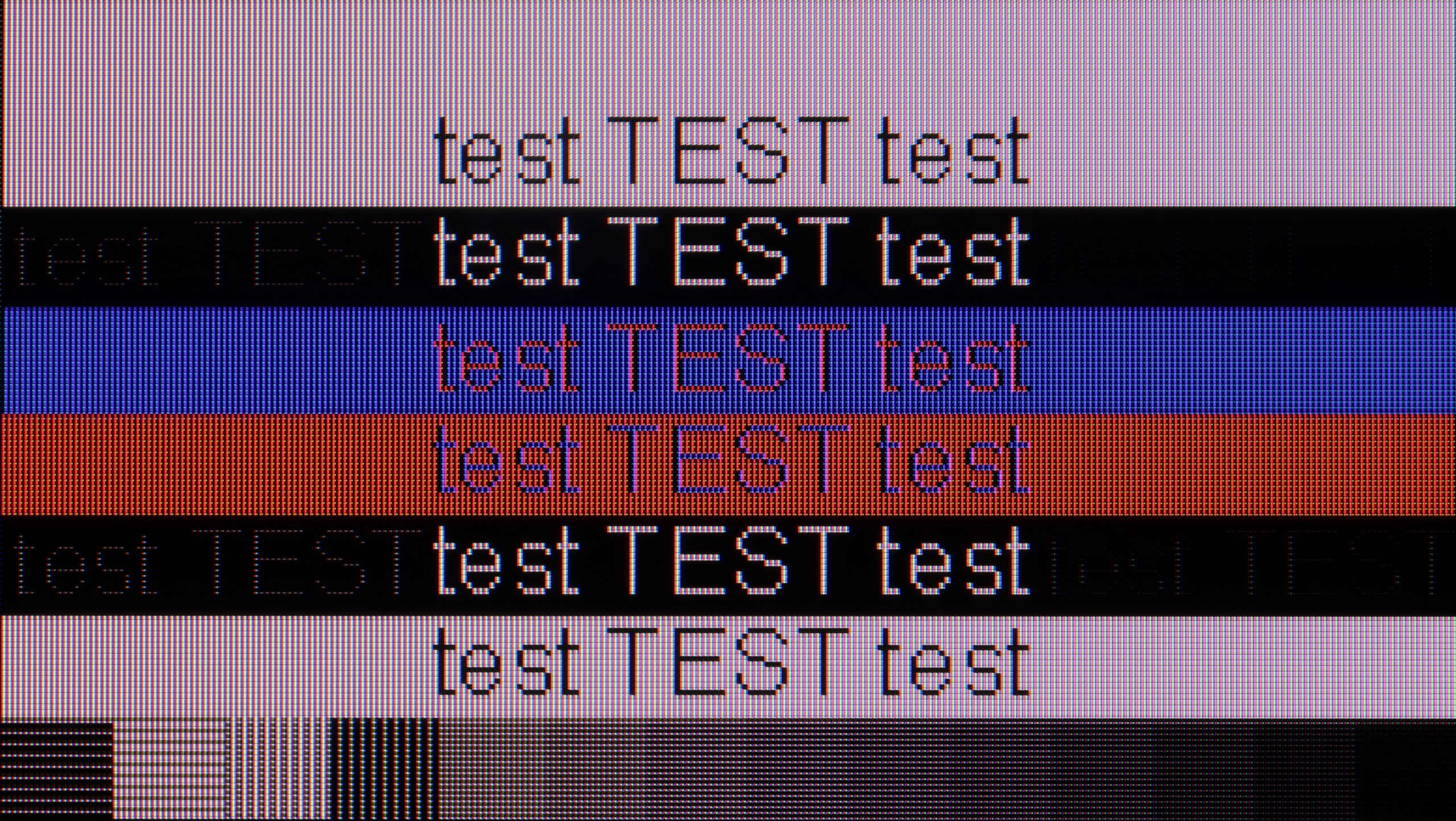
Sony Bravia 9 works excellently with a PC, thanks to its very low delay of just 9 ms, which is an immediate response between the mouse, the eye, and the screen. An extremely important aspect when working on a screen is primarily the readability of the text, which in the case of the tested television is very good. However, it is important to remember to switch the television to "Game" mode, as this mode provides the best text readability, whereas in other scenarios the font may turn out to be unreadable.
The subpixel layout is BGR, which does not negatively impact the use of the television as a monitor. However, since operating systems are not adapted to such a subpixel format, it can result in slightly less sharp contours. This is, however, practically negligible, and only a handful of people may notice it.
As we mentioned earlier, the C8K is a television designed with gamers in mind – and not just for console gaming. Connecting a PC is pure pleasure. The low input lag is practically unnoticeable, and the 4K panel at 144 Hz (or even 288 Hz in Full HD) makes gameplay exceptionally smooth. This is the kind of equipment that is really hard to tear yourself away from once you plug in a keyboard and mouse.
Office work and everyday use of the computer are equally impressive. Fonts – regardless of size – are readable and sharp thanks to Chroma 444. However, we have a small note: with very thin horizontal lines, slight imperfections can be noticed. We assume, though, that few will notice this, as hardly anyone plans to place the smallest 65-inch monster 50 cm from their face and use it like a regular monitor.
Viewing angles
7.4/10
4.5/10
Thanks to the application of an angle coating, the colour degradation and contrast drop at an angle are not as drastic as in the vast majority of VA matrix televisions. Only after a significant shift off the axis does one see greater image destabilisation; however, the overall assessment can be very positive.
One of the novelties in this year's TCL series is the WHVA panel, which has finally made a significant advancement in viewing angles for the Chinese manufacturer. And although you can't completely cheat physics – brightness does indeed drop quite noticeably when viewed from the side – the image itself remains readable and does not drastically lose colours or contrast. This is a considerable change, as VA panels typically fall short compared to IPS panels in this category. Meanwhile, in the C8K, it is evident that TCL has made an effort to ensure that even viewers sitting slightly to the side can still enjoy the full depth of the image – something that will be appreciated by anyone who cannot sit 'in the perfect middle of the sofa'.
TV efficiency during daytime
9.5/10
6.9/10

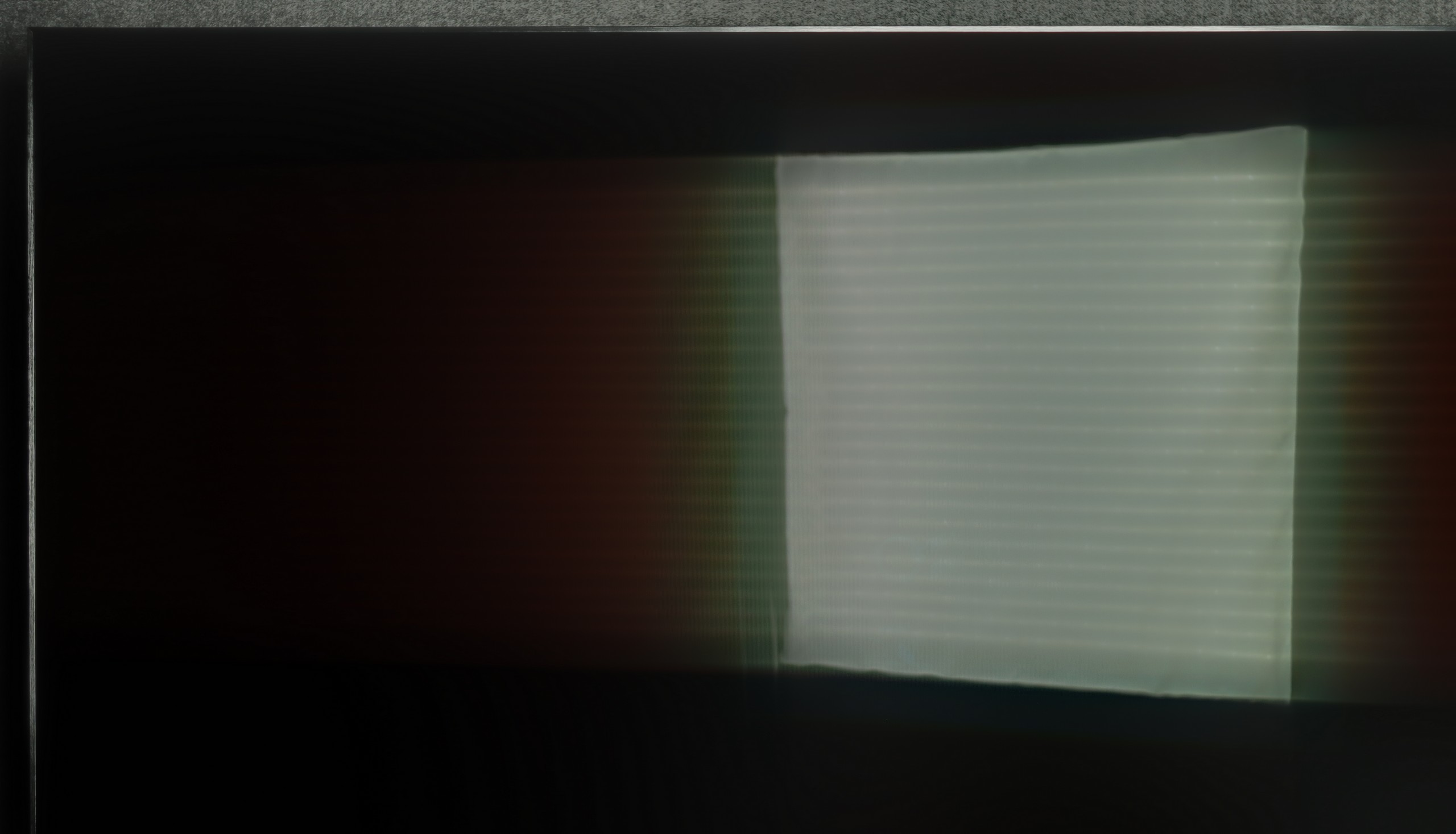


Matrix brightness
Average luminance SDR
TCL C8K: 613 cd/m2
Sony Bravia 9 (XR90): 1609 cd/m2
The Sony Bravia 9 excels in bright environments, with a peak brightness of 1600 nits. This allows for a comfortable viewing experience even when the TV is exposed to harsh angled light. Reflections are minimal and do not significantly affect the viewing quality, making it highly suitable for watching during the day. As a result, the Bravia 9 earns an almost perfect score for its performance in well-lit conditions.
C8K is truly a bright performer, and not just in theory. In SDR content, it can achieve an impressive 700 nits, which translates to very good image readability even in brightly sunlit rooms. So if you have a bright living room with large windows, this television won't have much trouble with that. However, it is worth mentioning one detail: the WHVA panel used here, with improved viewing angles, causes light reflections to be more diffused sideways. In practice, this means that, for example, wall sconces or floor lamps directly opposite the screen may reflect in a slightly more widespread manner than in typical glossy/satin panels.
Details about the matrix
Subpixel Structure:

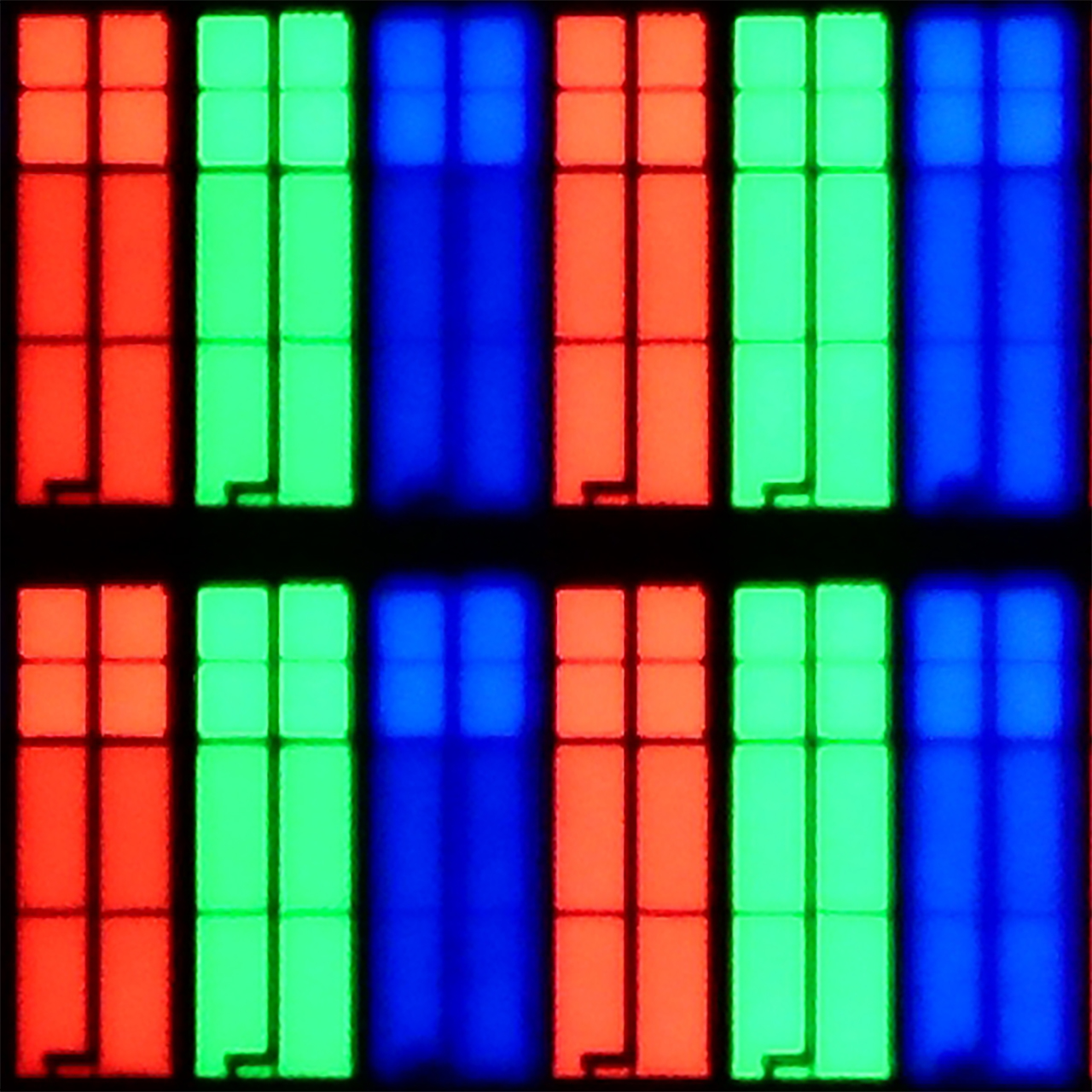
Panel uniformity and thermal imaging:

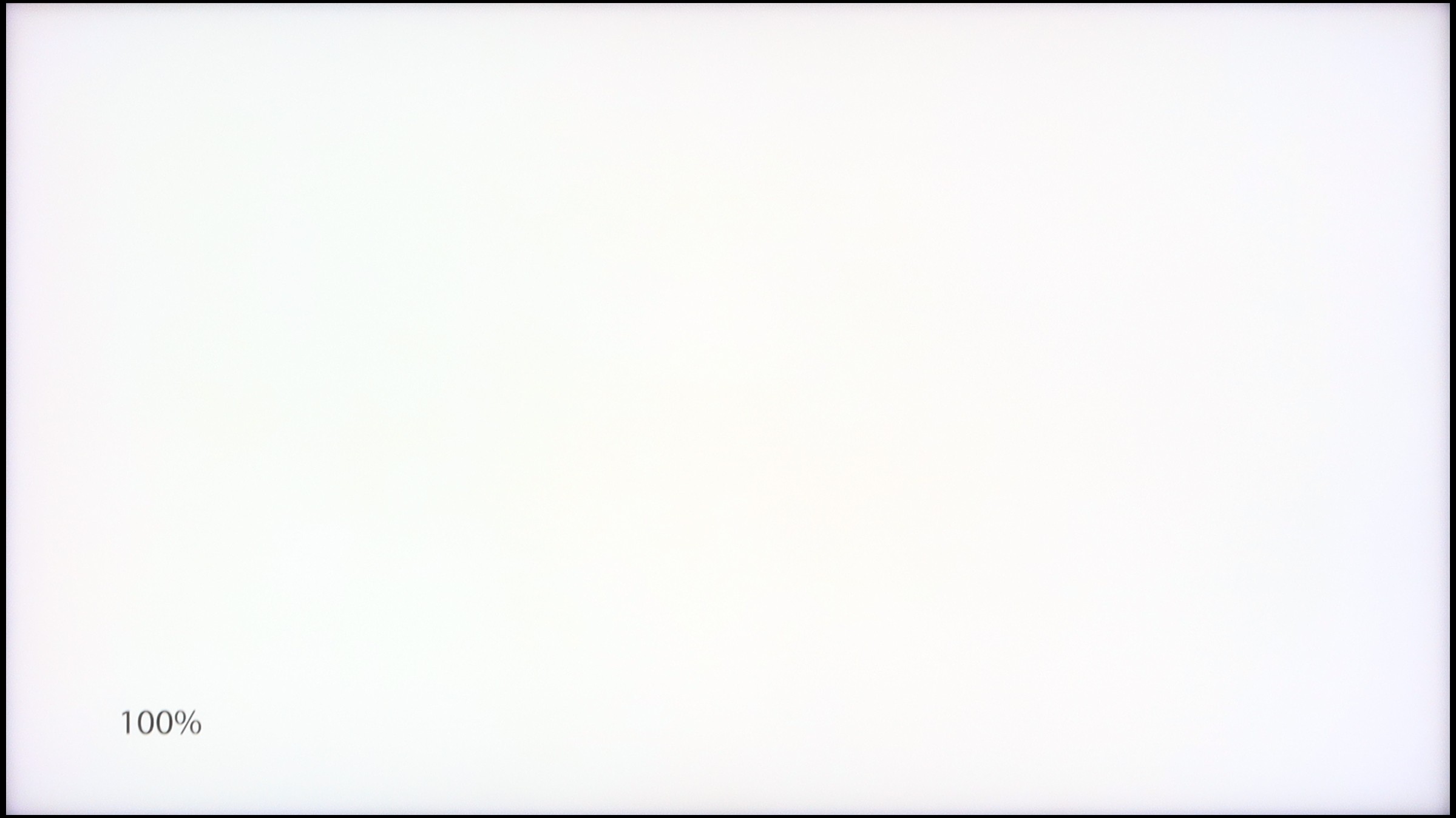
TV features
8.8/10
7.7/10
- HDMI inputs2 x HDMI 2.0, 2 x HDMI 2.1 48Gbps2 x HDMI 2.0, 2 x HDMI 2.1 48Gbps
- OutputsToslink (Optical audio), eARC (HDMI), ARC (HDMI)Toslink (Optical audio), eARC (HDMI), ARC (HDMI)
- Network InterfacesWi-Fi 2.4GHz, Wi-Fi 5GHz, Ethernet (LAN) 100MbpsWi-Fi 2.4GHz, Wi-Fi 5GHz, Ethernet (LAN) 100Mbps
- TV receptionDVB-T, DVB-T2, DVB-S, DVB-S2, DVB-CDVB-T, DVB-T2, DVB-S, DVB-S2, DVB-C
Classic features:
- Recording to USB (terrestrial TV)
- Recording programming
- Picture in Picture (PiP)
- RF remote control (no need to aim at the screen)
- Backlit remote control
- Teletext
- Audio only mode
- Bluetooth headphones support
- Simultaneous Bluetooth headphones & TV audio
Smart features:
- AirPlay
- Screen mirroring (Windows Miracast)
- Voice search
- Voice search in native language
- Ability to connect a keyboard and mouse


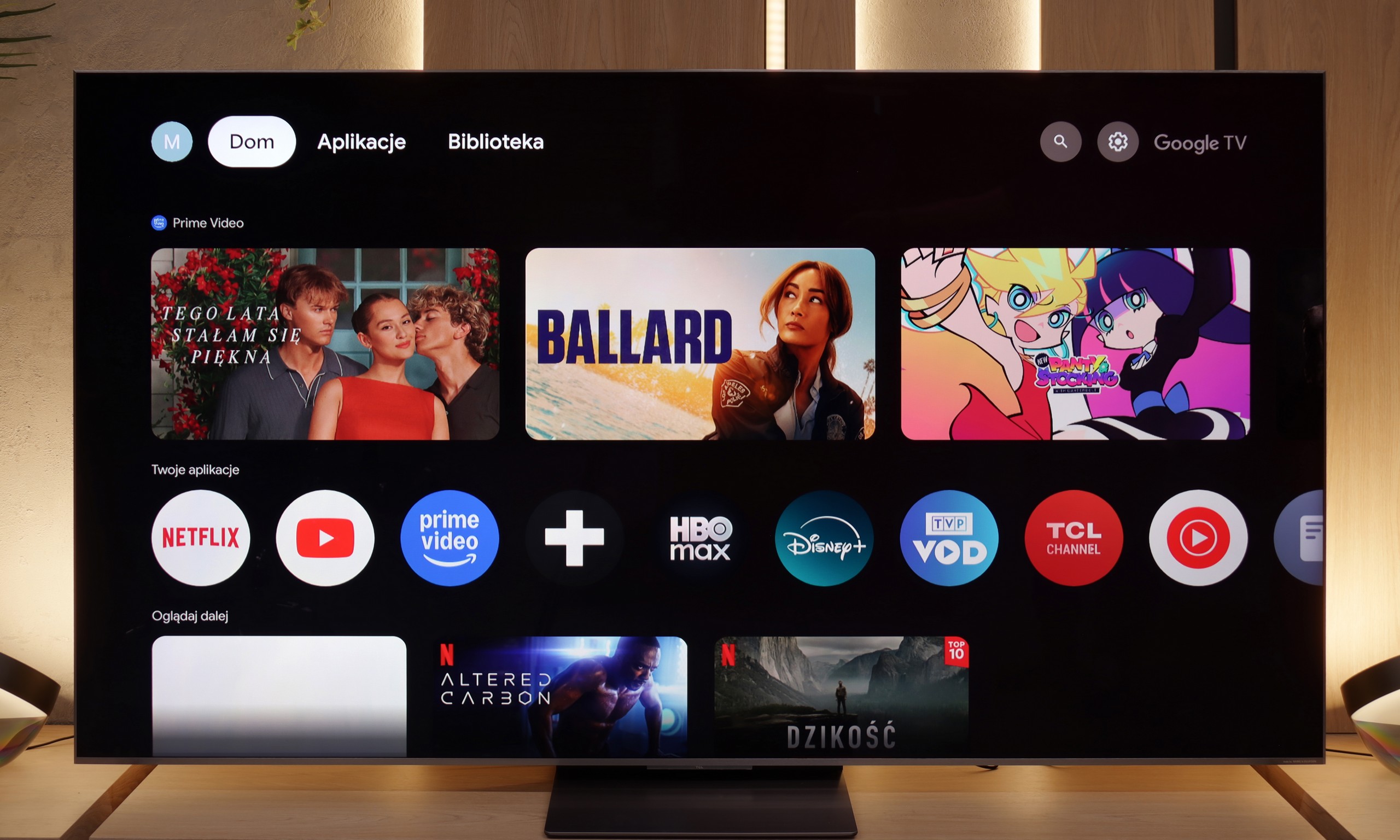
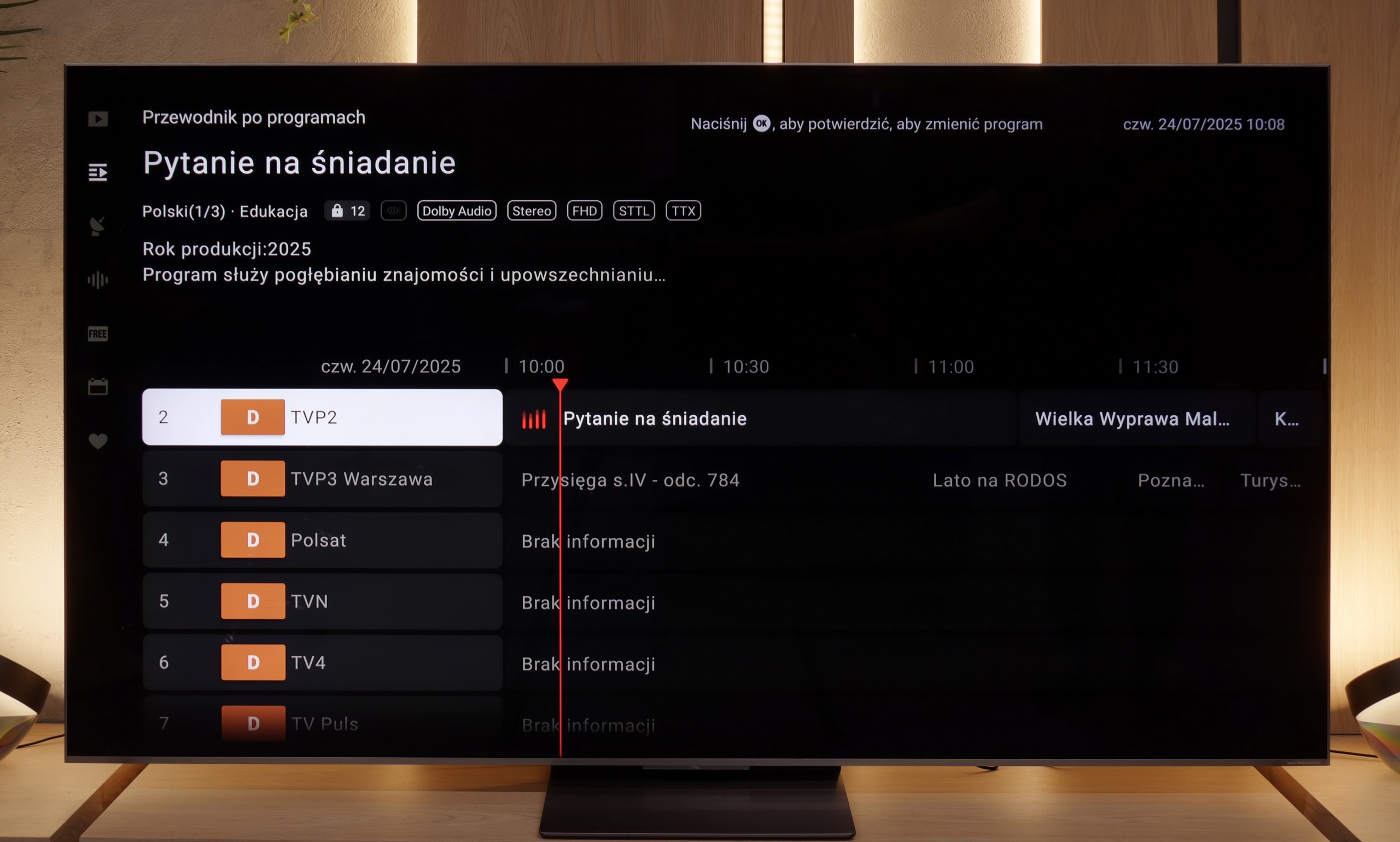
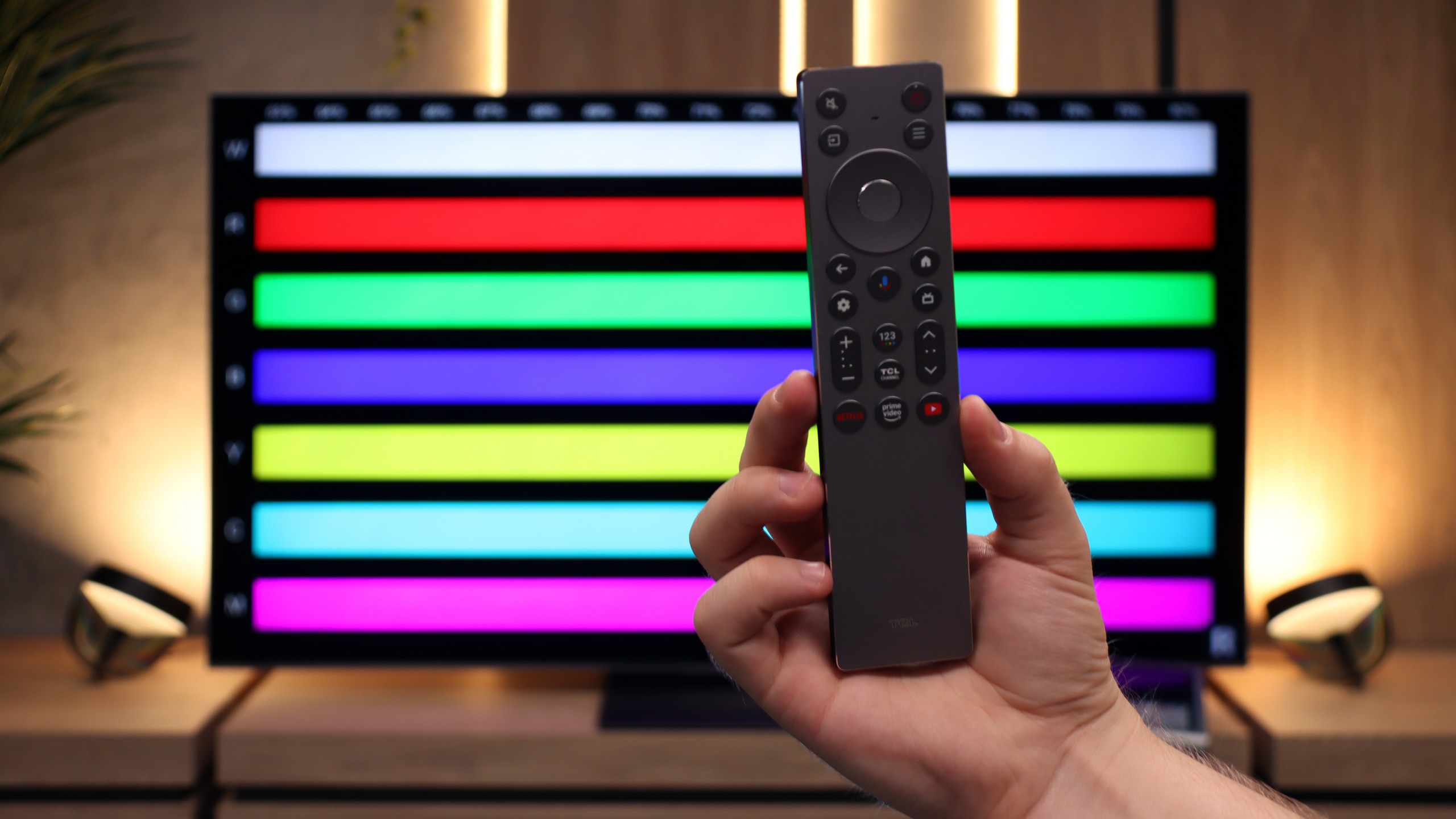
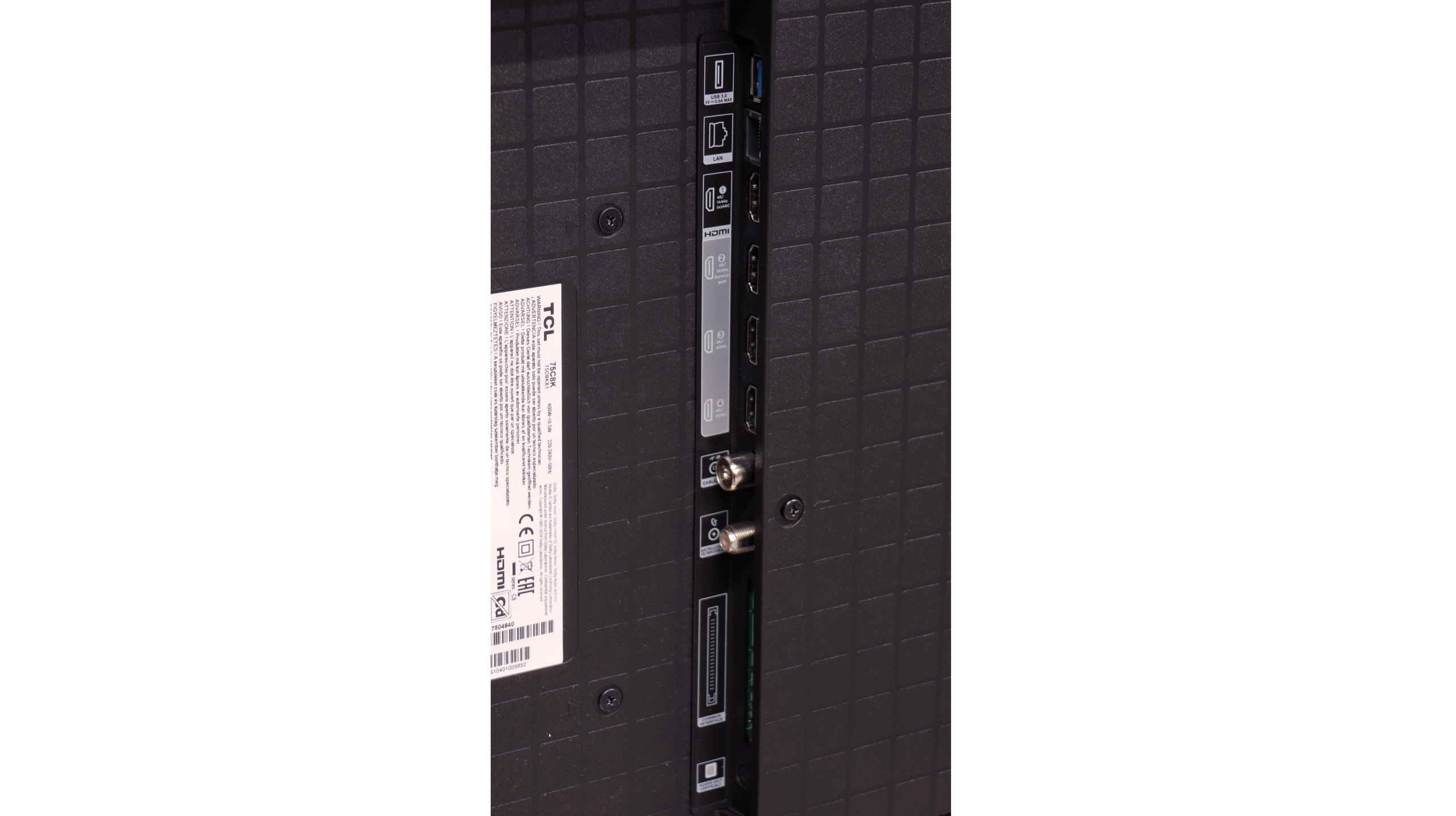
Bravia 9 operates on the Google TV system, which is a significant advantage compared to televisions equipped with proprietary systems from manufacturers, where installing applications from a USB drive can be cumbersome, and often virtually impossible. Thanks to Google TV, we have the capability to install virtually any application, both from the official store and directly from online repositories via an APK file.
This system also offers many conveniences in terms of control. We can connect a keyboard with a touchpad, which significantly eases the process of entering queries. Additionally, due to the integration with Google, we can utilise voice control features via the remote, which work very well, although there are occasional minor issues with translating functions and options. It's worth noting that Google TV regularly receives updates that enhance functionality and introduce new options. We can also confirm that, according to reports from users of older models, the software has its off days and sometimes experiences its "bad day".
In summary: Google TV is currently one of the most popular systems on the market. With a powerful CPU, it operates very smoothly, does not freeze, and does not have issues with stuttering for a significant portion of its usage. It is definitely the best option for those who want to fully utilise the capabilities of their television and value the openness of the system.
Classic Television Features
The TCL C8K offers the vast majority of features that we consider essential today. It has a classic and clear electronic programme guide (EPG), and teletext features are included, while connecting a keyboard, mouse, or Bluetooth headphones posed no problems at all. It's somewhat unfortunate that the Google TV system – like in many other TCL models – lacks more advanced options, such as programme recording or picture-in-picture (PiP). This may be a drawback for some users, especially if they are accustomed to using these options with other manufacturers. One might also have some reservations about the number of USB ports – there is only one. However, in practice, most people will find it sufficient to connect a drive with movies or a USB stick.
Smart Features
While classic television functions are not the strong suit of the C8K, in terms of smart features, this television truly shines. The Google TV system implemented is the largest and most popular platform on the market – and you can feel it at every turn. The availability of applications is phenomenal. Netflix, YouTube, Disney+, HBO Max, Amazon Prime – all of these can be found here without the slightest problem. Only truly niche or closed ecosystems (e.g. Apple Music) may not be available. The built-in voice assistant works very efficiently – you can ask it to change the channel, launch an application, search for a film, or check the weather. The system responds naturally and quickly, giving a genuine sense of convenience and modernity. It is precisely here that the C8K definitely outpaces a large portion of the competition – after all, that's why we have smart TVs, so that the television does more than just display images.
Playing files from USB
8.7/10
9.2/10
Supported photo formats:
Maximum photo resolution:

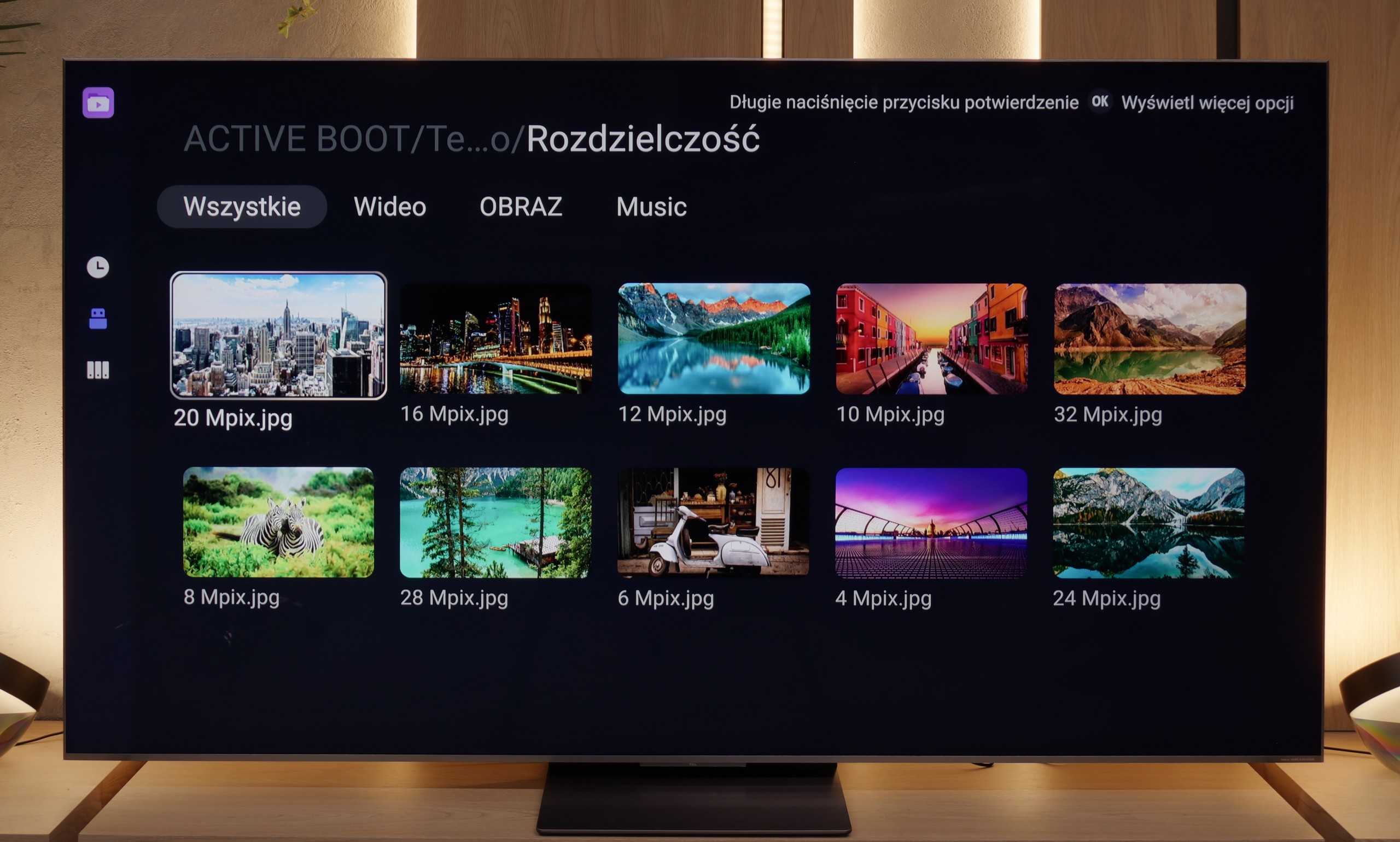
The built-in player on the Sony Bravia 9 is of a good standard. Although it is not without its faults, it has to be acknowledged that it plays a significant number of files seamlessly. However, among the missing features, the lack of support for subtitle formats like .sub, .txt, or selectively functioning image formats, of which only JPEG and HEIC are available, may be felt. This is not, of course, an issue given the ease of installing applications like VLC or KODI.
We did not expect miracles, but... we got more than we anticipated. The TCL C8K handled most of the files we put on the USB stick without any issues. Movies in MKV, older AVI, audio tracks in DTS or AC3 – everything worked without a hitch. If we were to nitpick, it would be the usual lack of support for the HEIC format from Apple devices, but that is a standard shortcoming one can live with. The most important thing, however, is that if someone lacks anything, they can simply... install a better player. And this is where the advantage of Google TV is felt.
Apps
9.6/10
9.6/10














































Sound
9.4/10
7.9/10
- Maximum volume-77dB
- Dolby Digital Plus 7.1
- Dolby True HD 7.1
- Dolby Atmos in Dolby Digital Plus (JOC)
- Dolby Atmos in Dolby True HD
- DTS:X in DTS-HD MA
- DTS-HD Master Audio
We must admit that the sound emanating from the Sony Bravia 9 left us quite astonished. Of course, we knew it was a top-of-the-line product, but we didn't expect such sound quality. You can easily hear each instrument individually, and the bass adds the right depth to the overall experience. With a clear conscience, we can say that it is the best-sounding television we have had the pleasure to test. We are also aware that people who choose such a television have their own home cinema setup. And here, there will be no significant obstacle, as the Bravia 9 supports DTS-HD Master Audio and Dolby Atmos.
In the case of sound, we typically don't have high expectations. After all, a television is not a Hi-Fi system. But... the C8K pleasantly surprised us. A new feature in the latest top models from TCL is the collaboration with Bang & Olufsen and – most importantly – you can really hear that this isn't just a marketing gimmick. After just a few minutes with the TV, it was clear that it sounds different from a typical "flat screen." The sound is full with a slight but noticeable bass. Of course, we are still talking about sound from a television, so it won't compete with the cheapest soundbar with a subwoofer, but considering the standards of built-in speakers – it is very good.
*During testing at maximum volume, we noticed unusual behaviour in the audio system. With the slider set to 100%, the television reaches around 76–78 dB, but you can hear it trying to generate more power, after which the sound level is immediately adjusted back to the mentioned value. On the other hand, when we lower the volume to, for example, 70%, it initially drops as expected, but after a moment, it slowly rises back to the same level of 76 dB. This effect gives the impression of an aggressive limiter that always brings the volume down to a single level, regardless of the position of the slider. We checked this behaviour multiple times and in each case, the result was identical – no additional functions of "intelligent" volume adjustment or AI were active.
Sound Quality Test
No sound test video
Acoustic Measurements
No acoustic data
77dBC (Max)
75dBC
